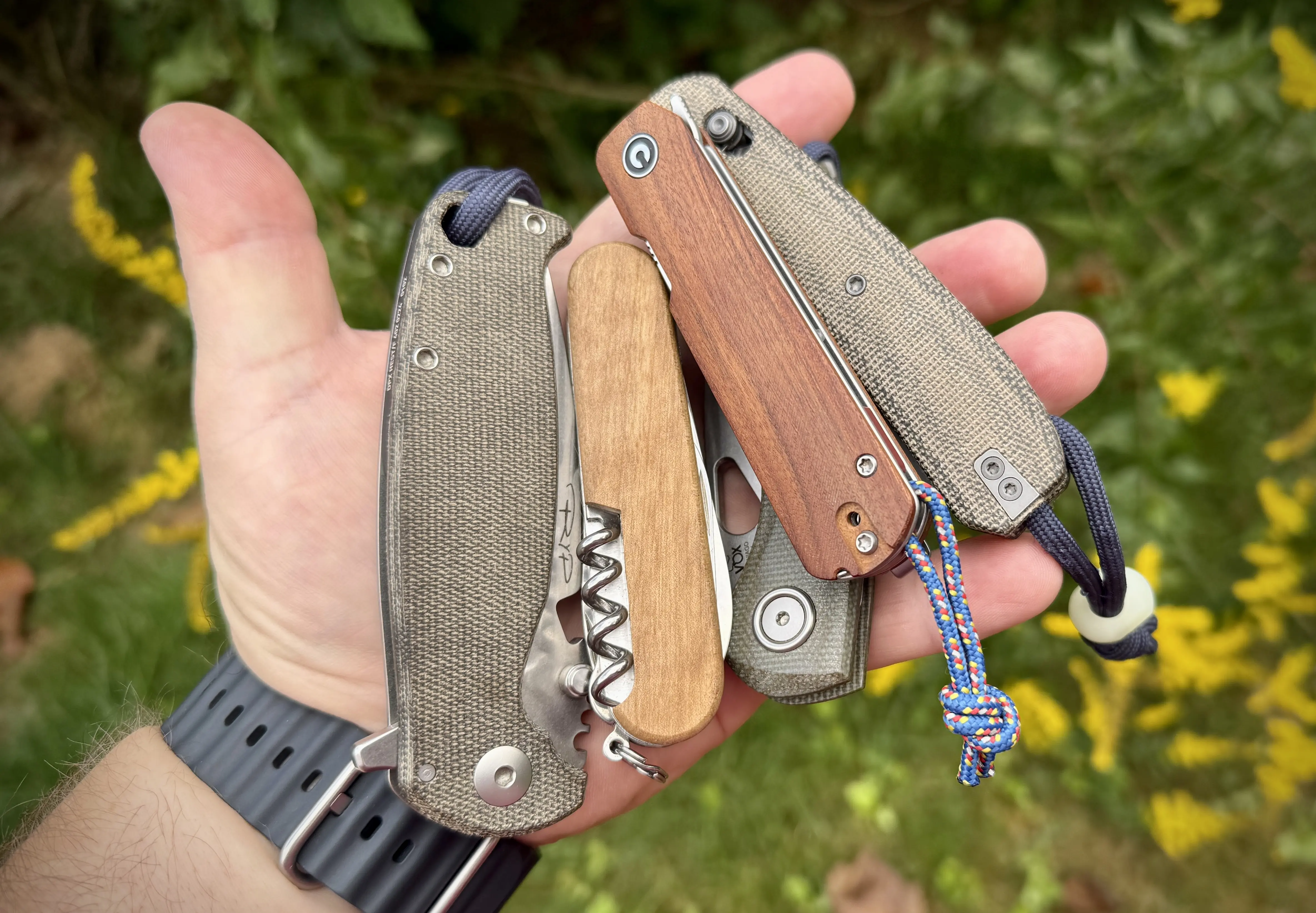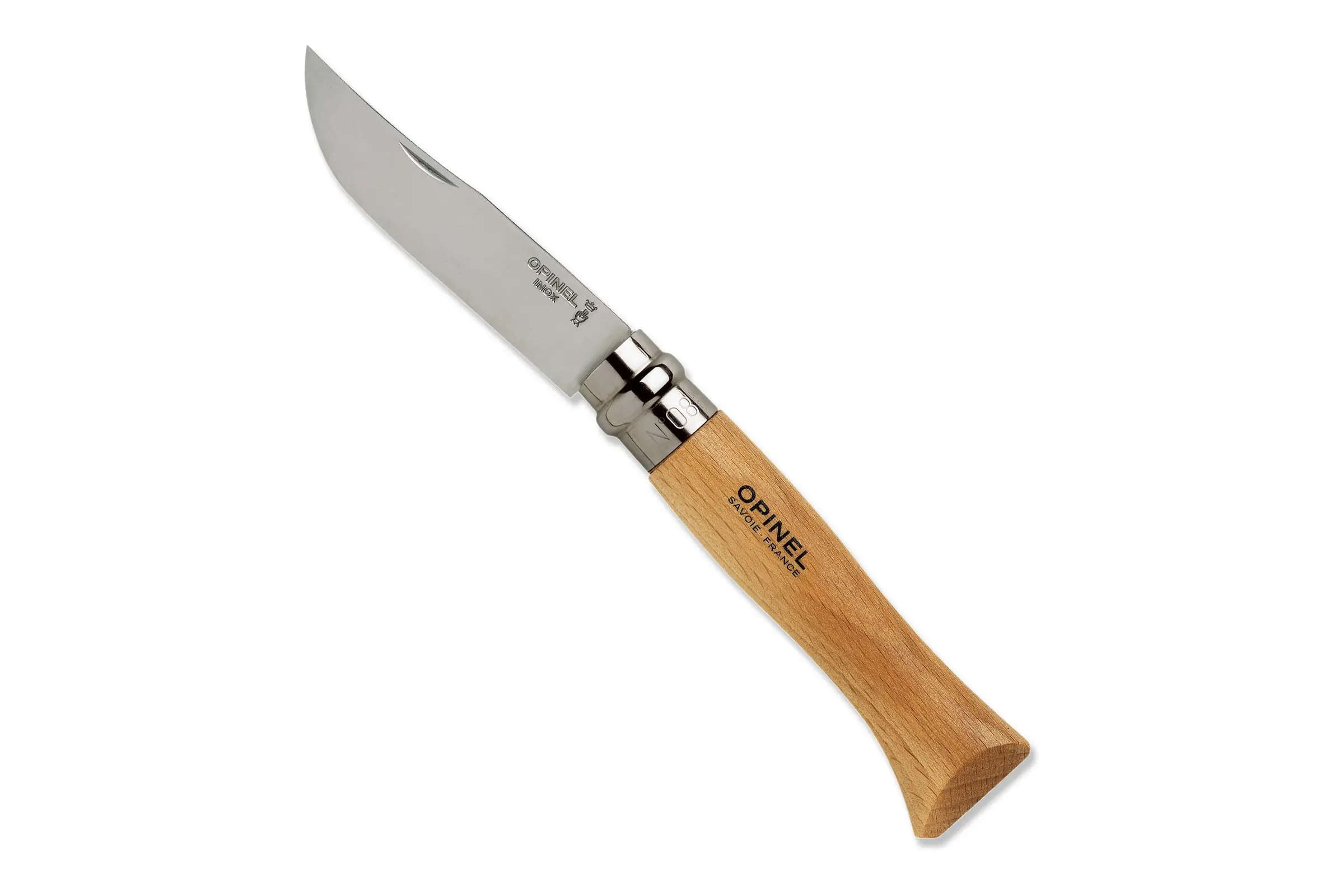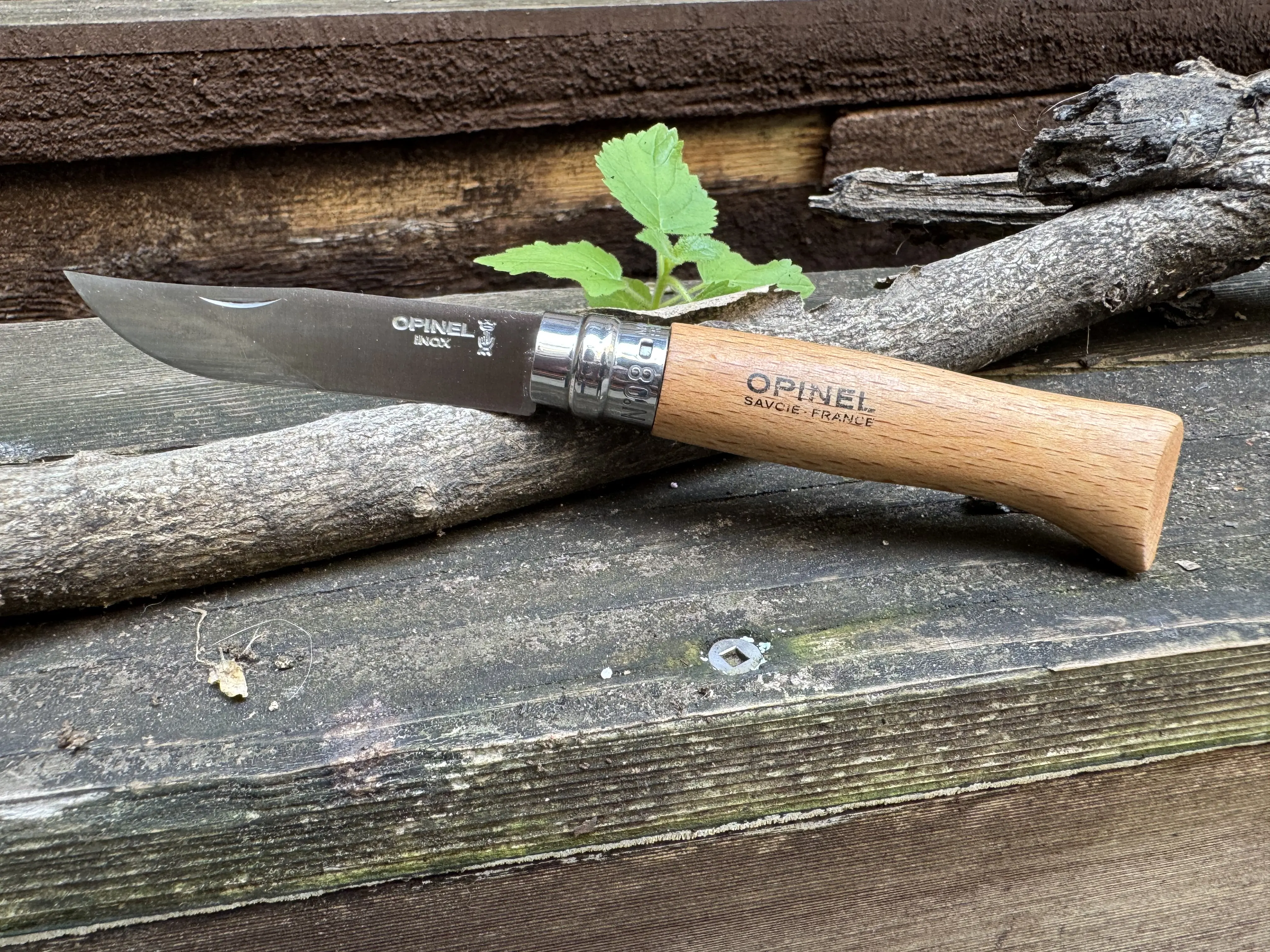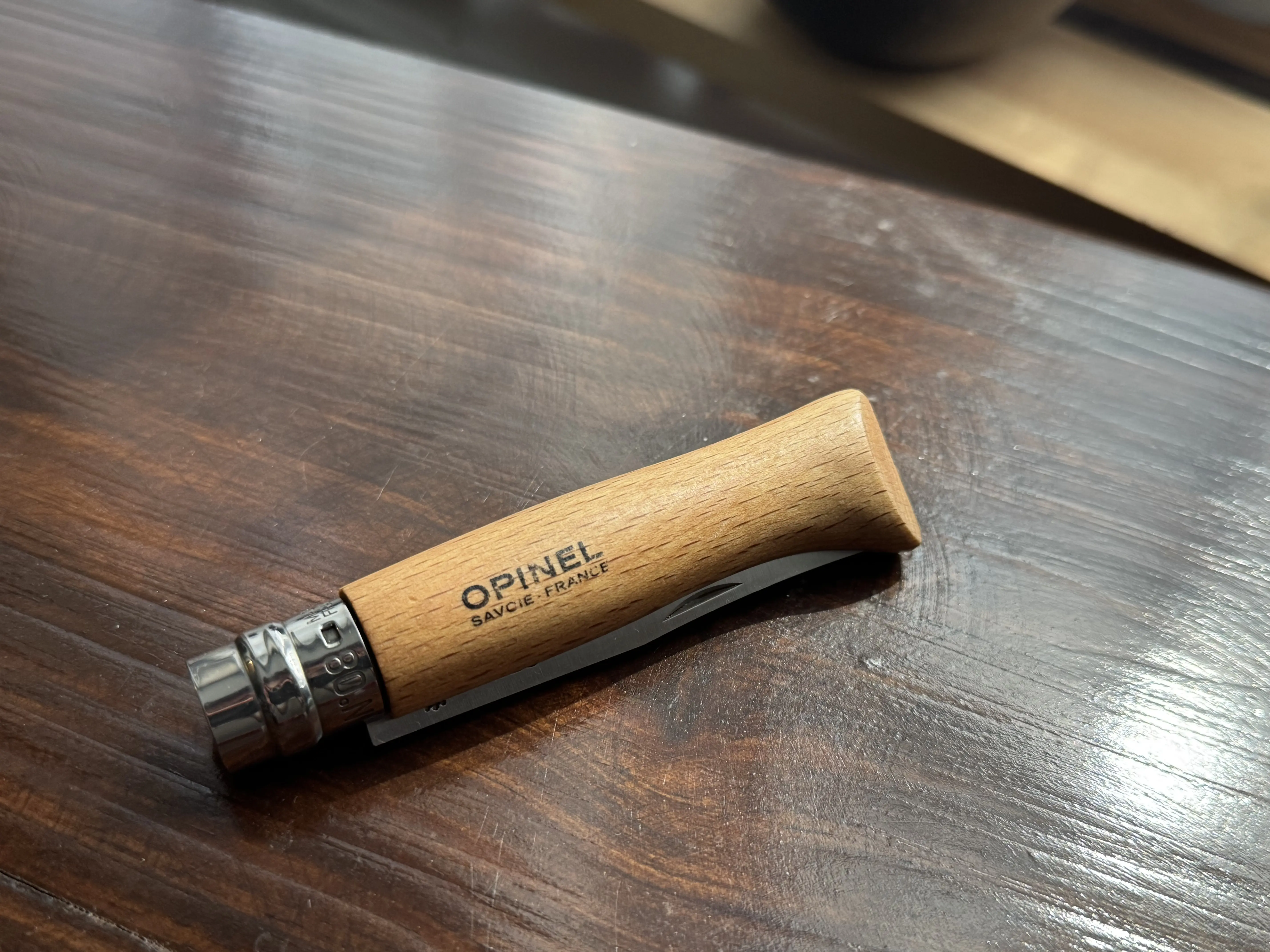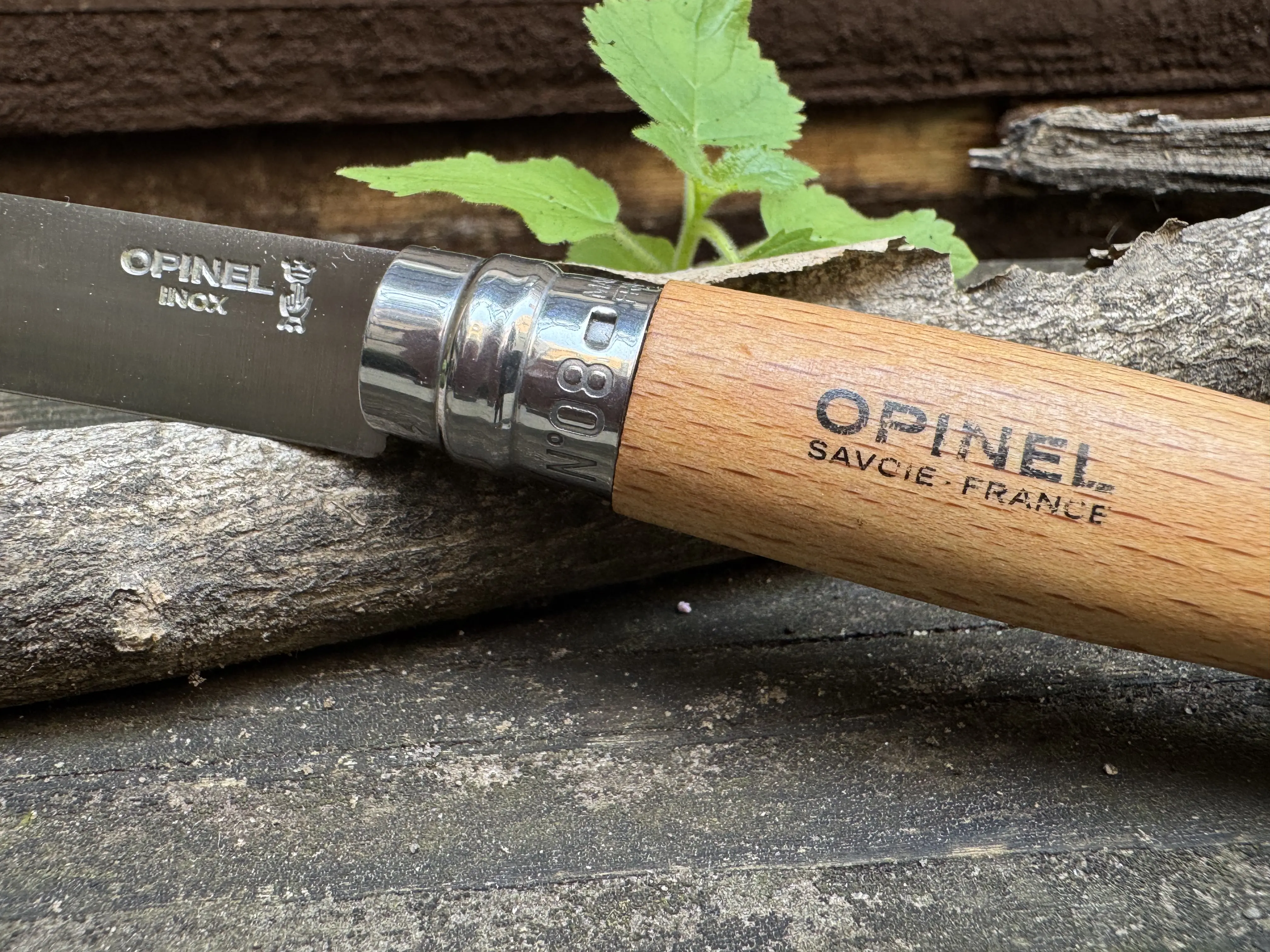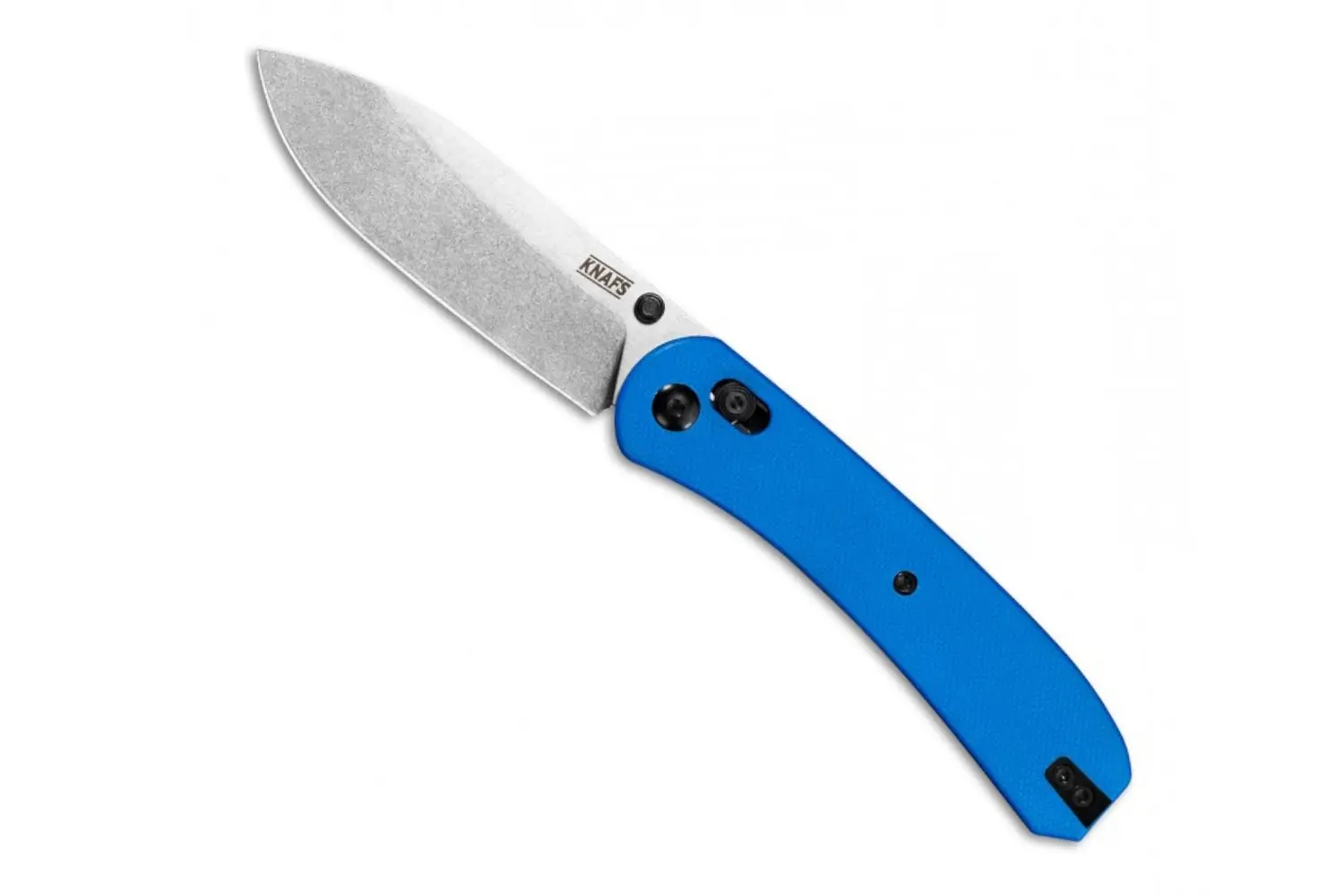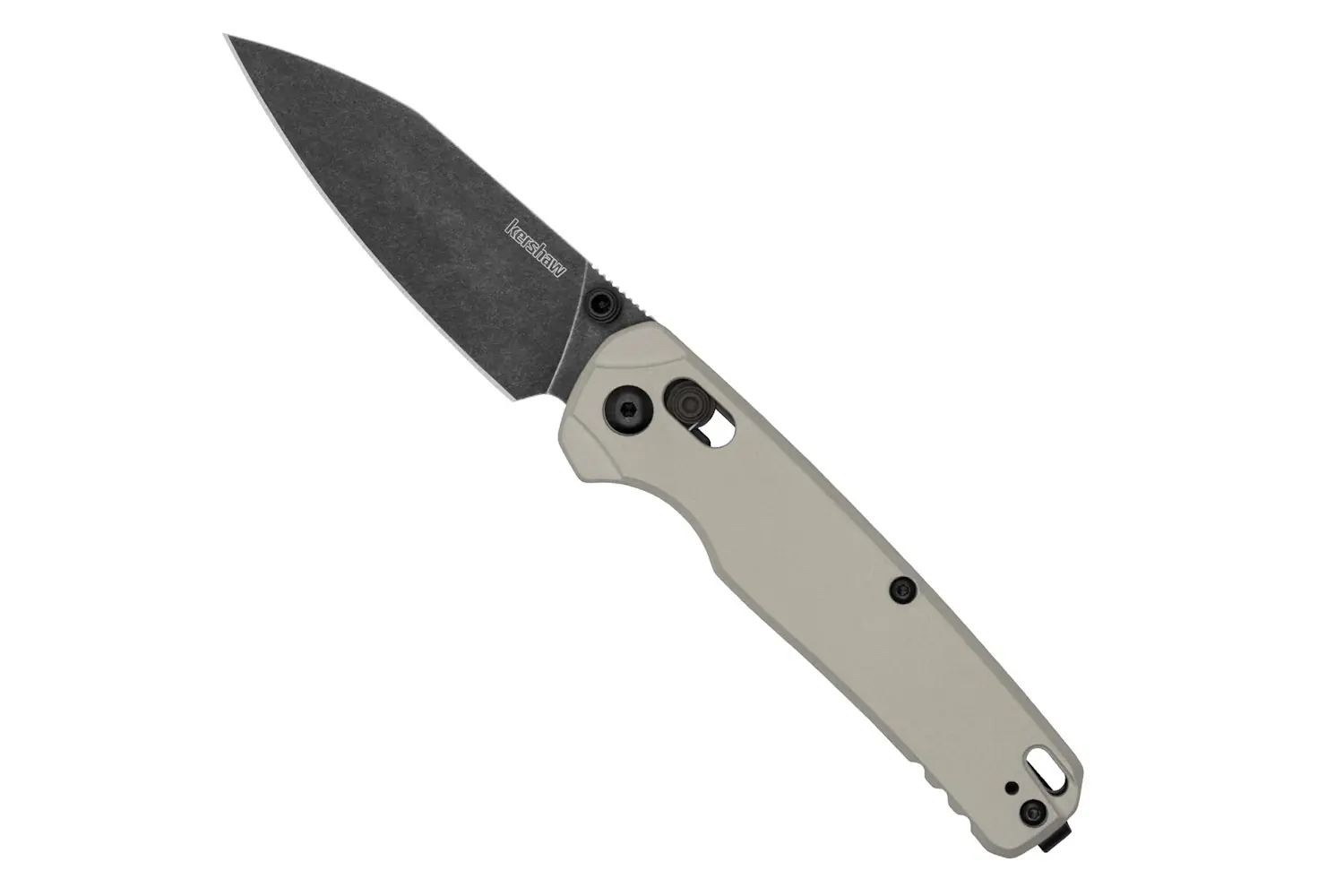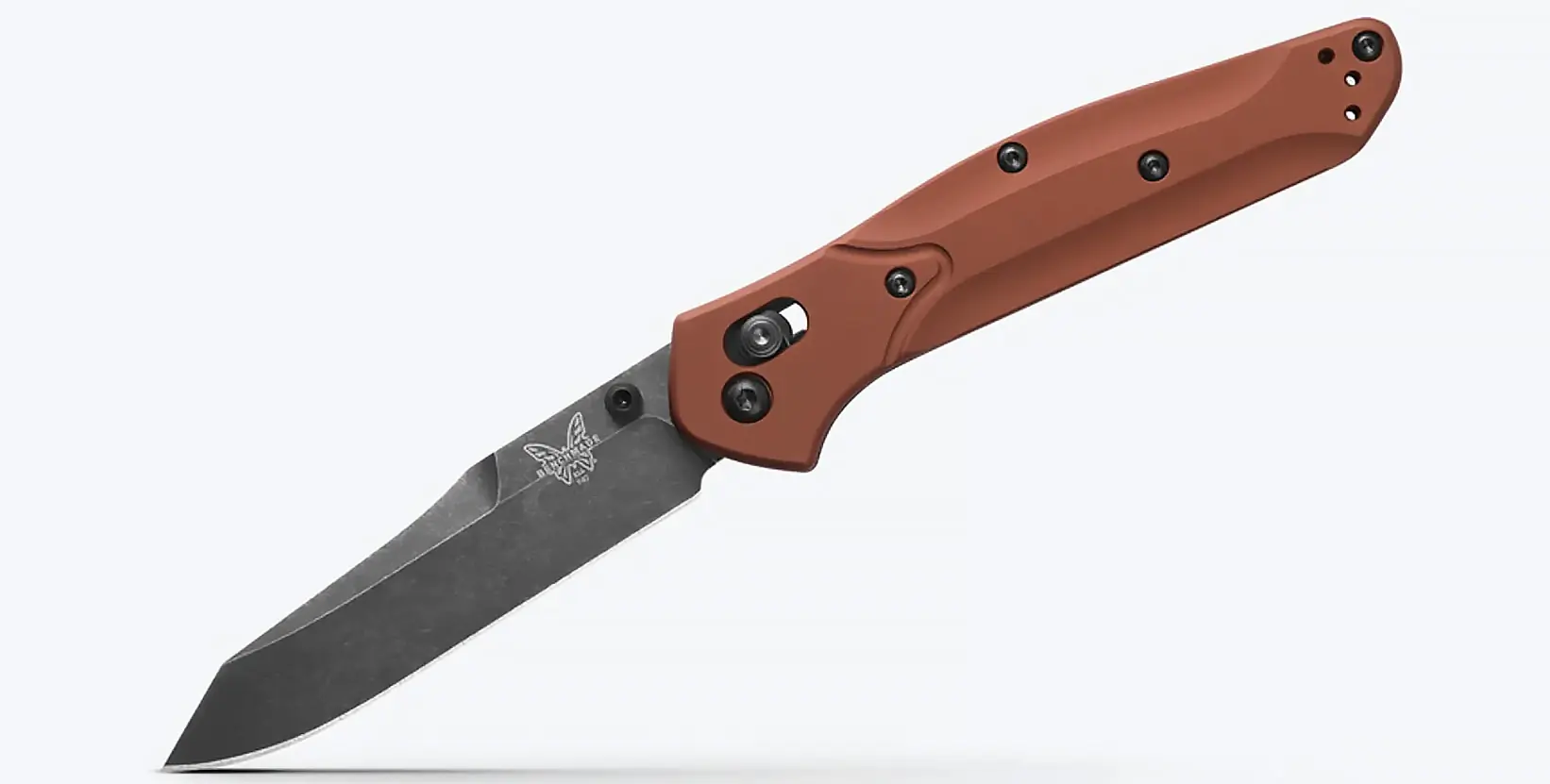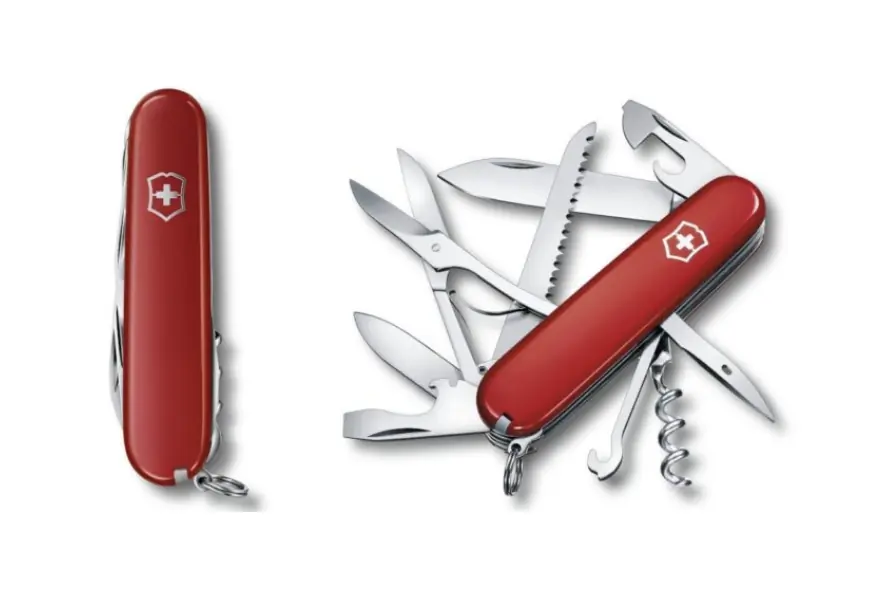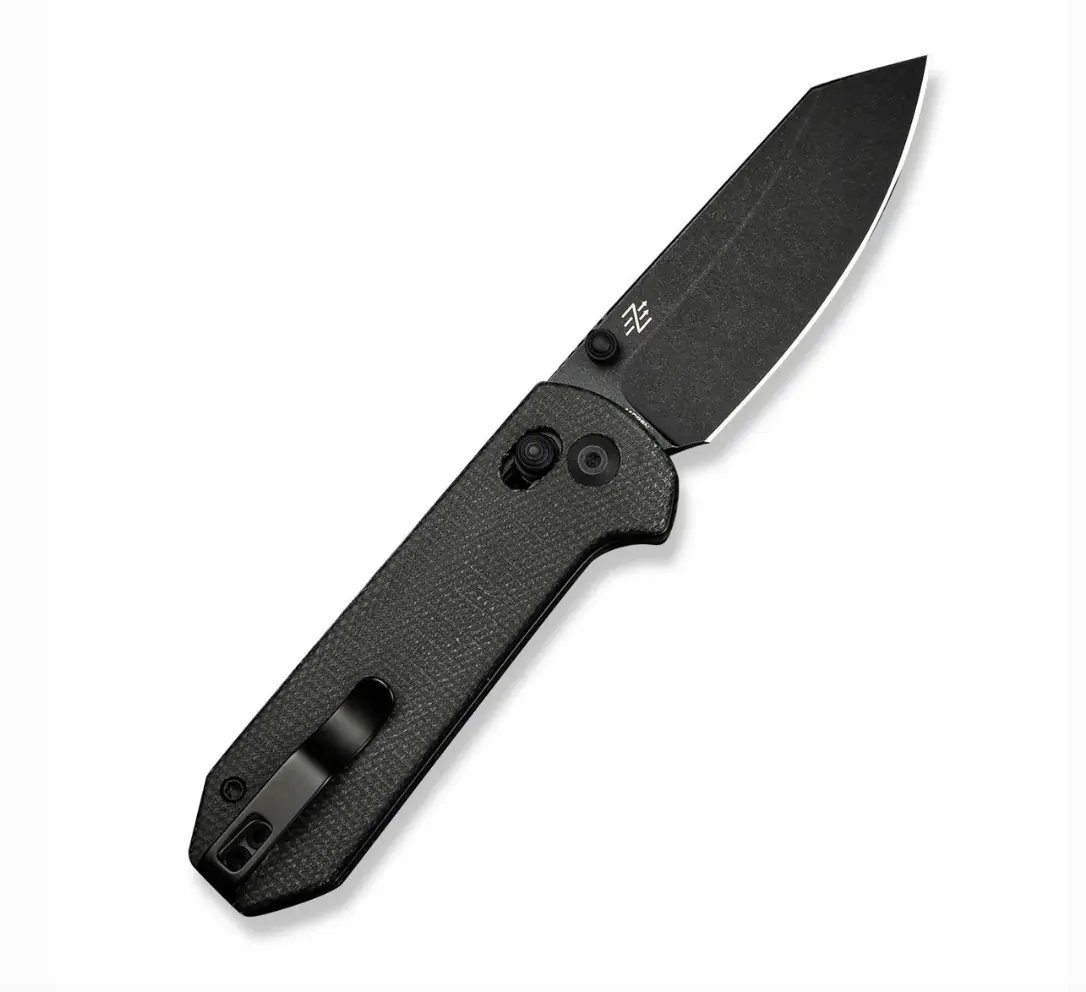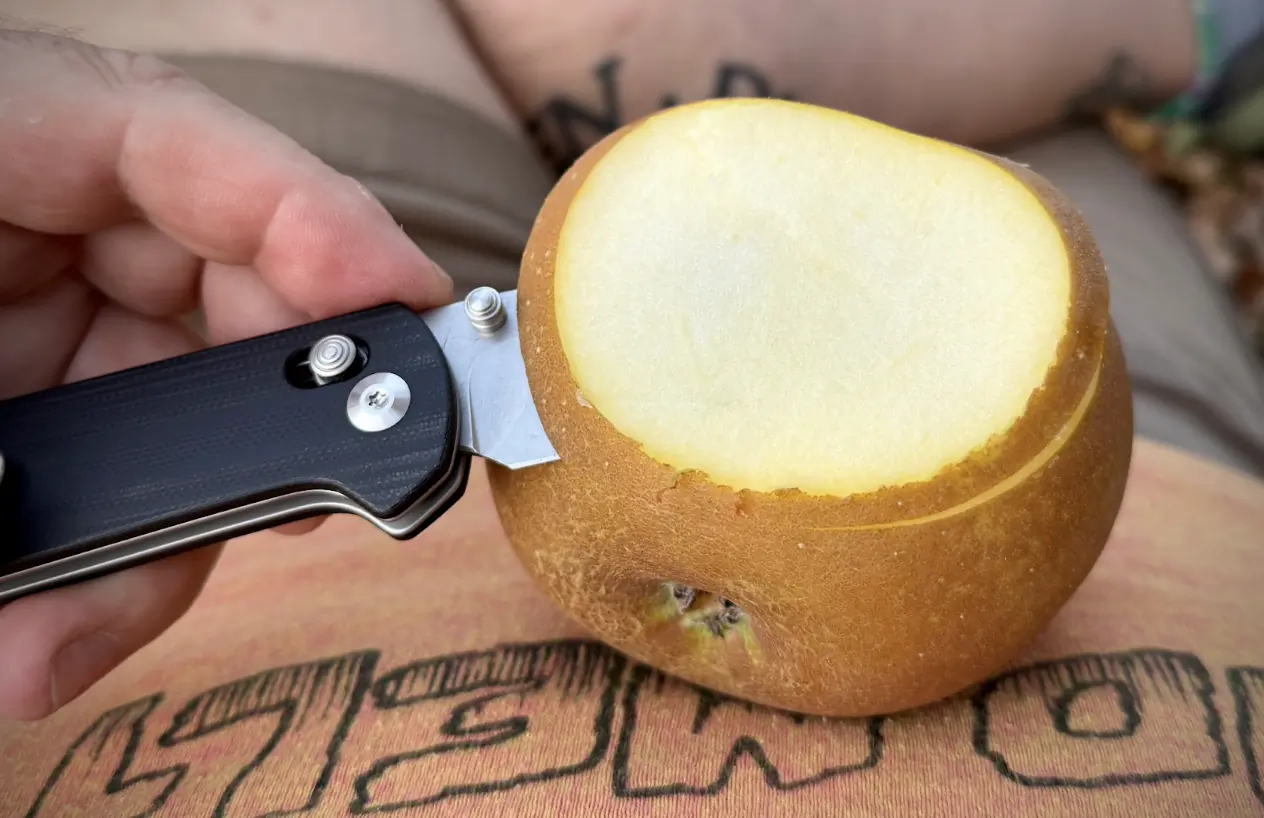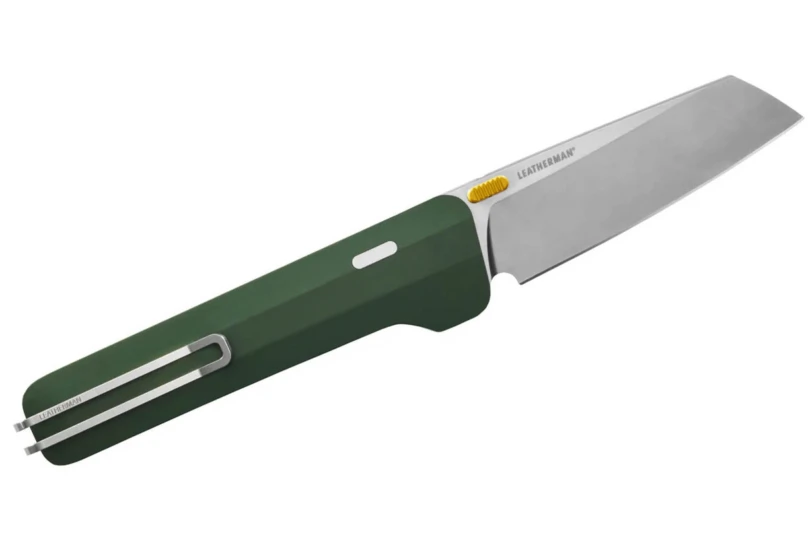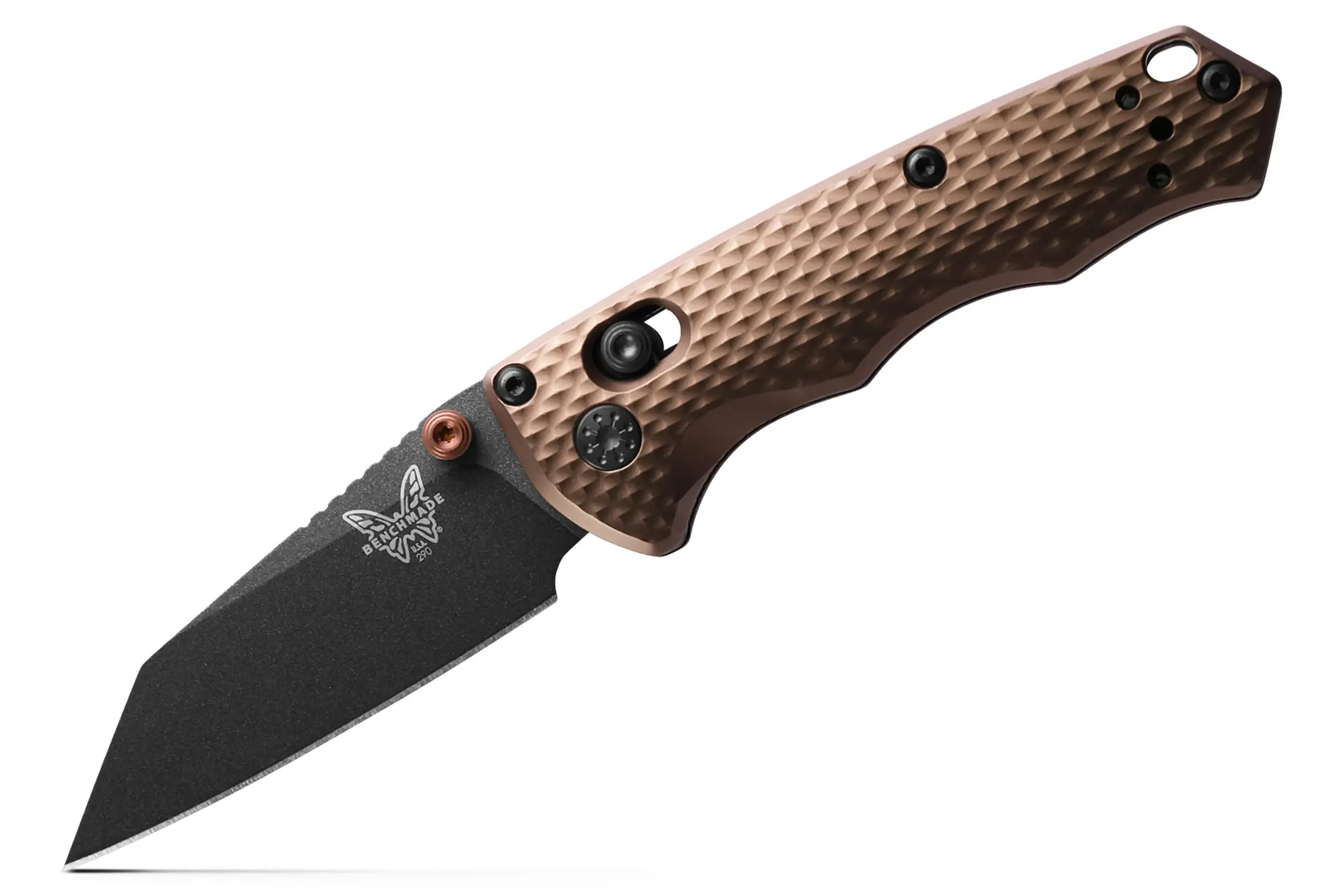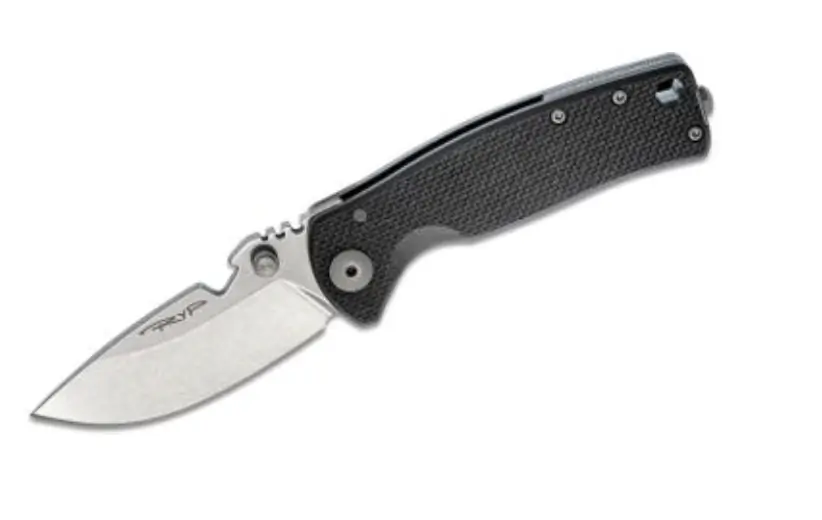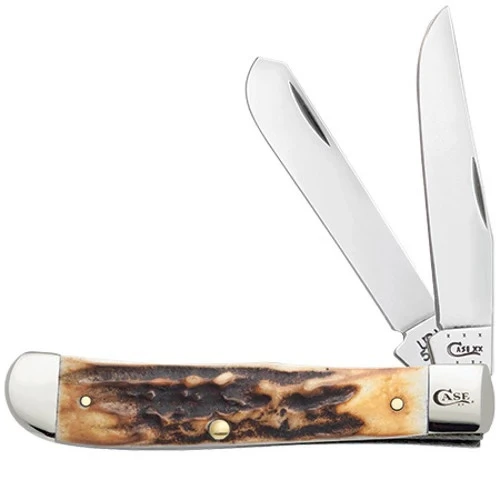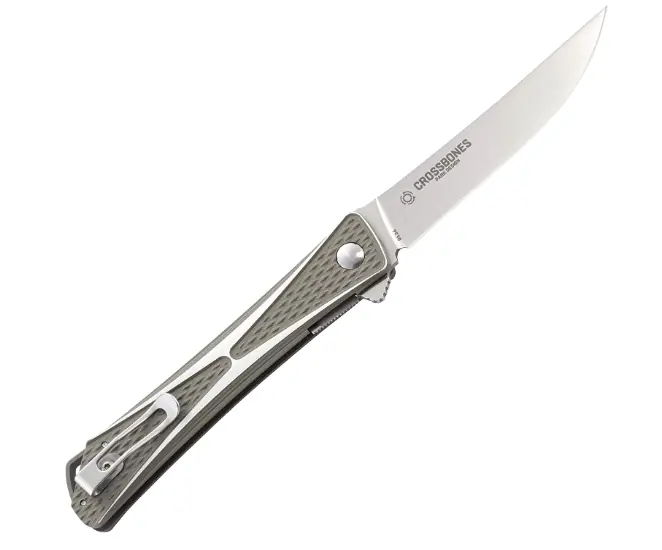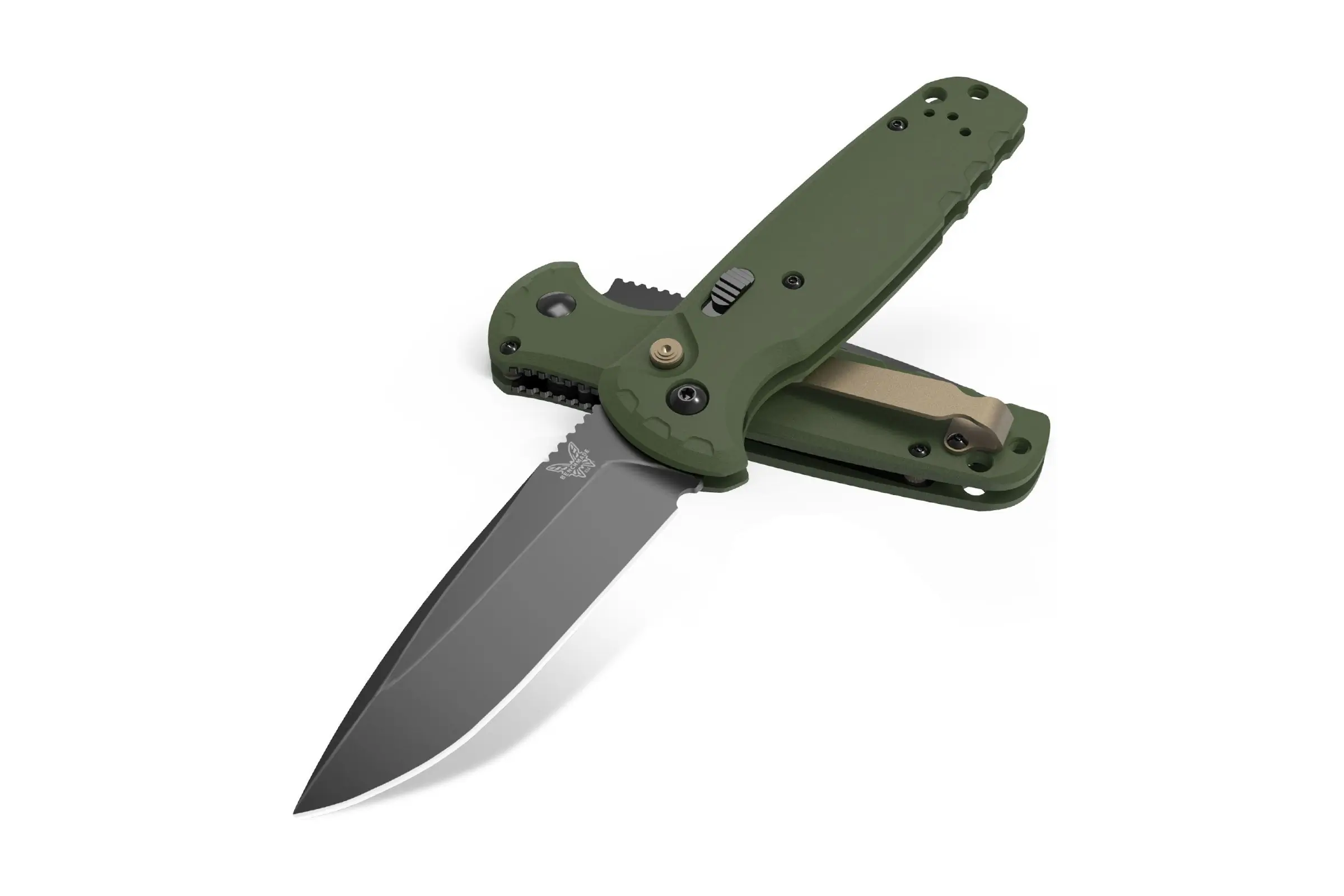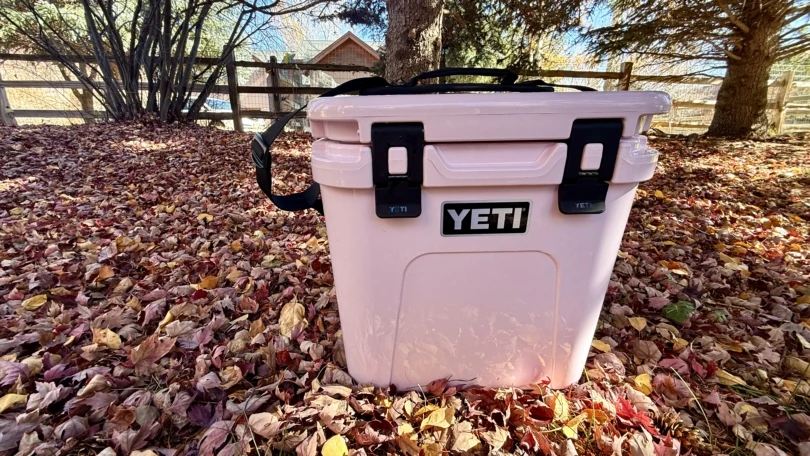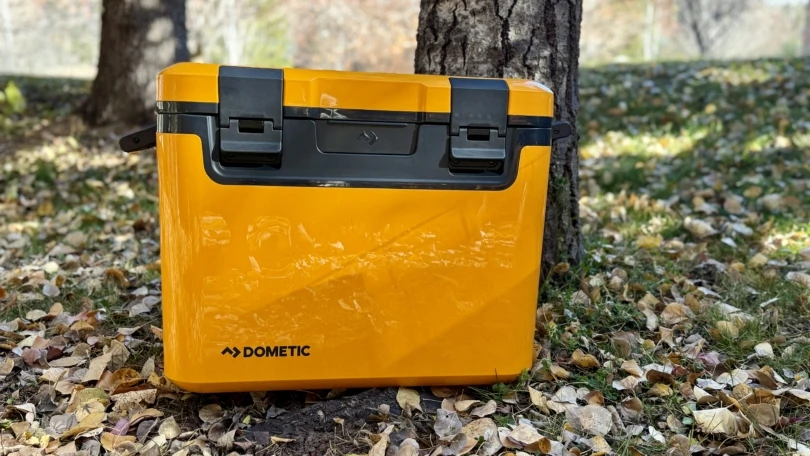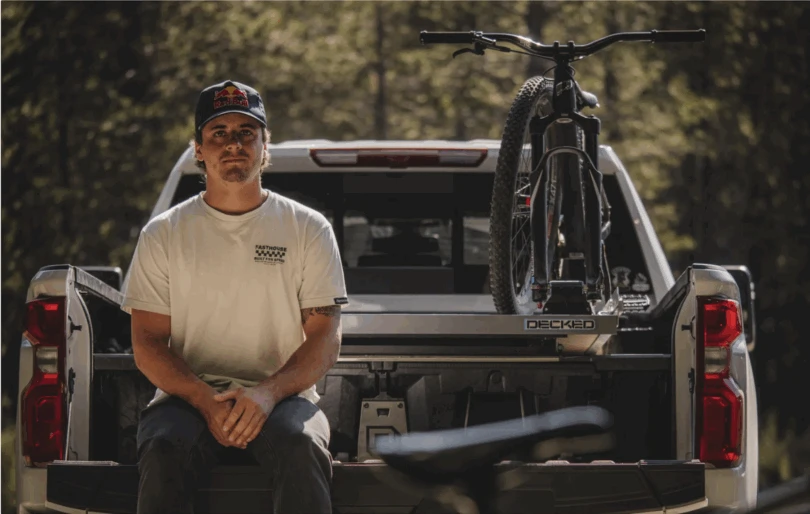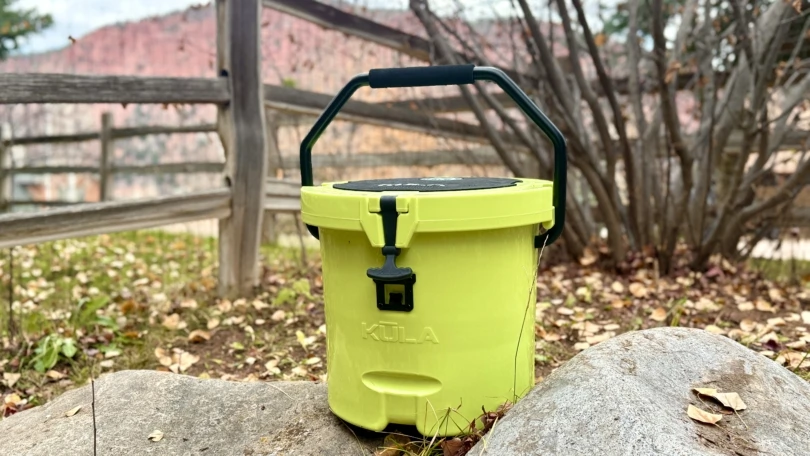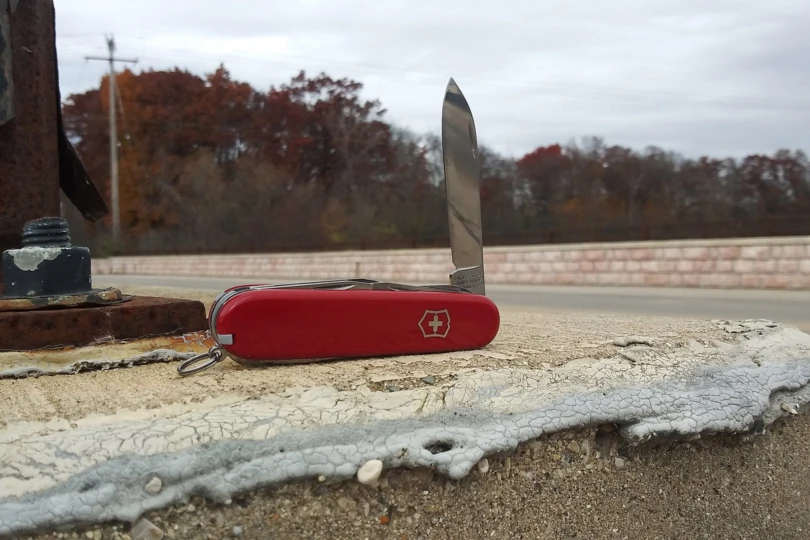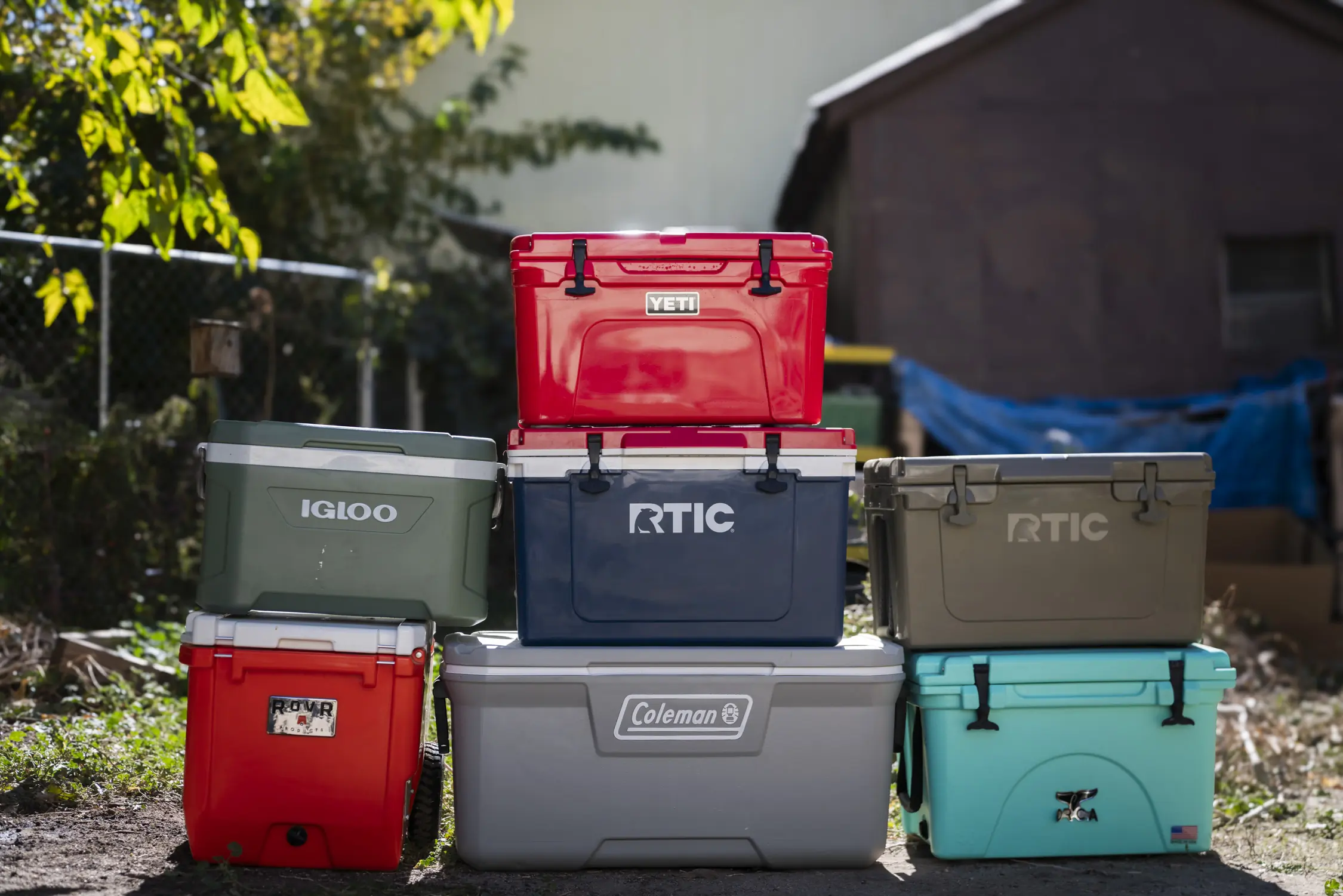Pocket knives are flat-out handy. And they’re a ton of fun. Whether you’re a general outdoorsman, blue-collar worker, or someone who’s looking for an everyday practical tool, they can quickly turn into an obsession.
Obsessed would be a good way to describe the team at GearJunkie. We have backpackers, climbers, hunters, fishermen, and general outdoor enthusiasts. It’s safe to say that all of us see the value in a trusty pocket knife and use one regularly. Pocket knives transcend our differences in interests. They’re a piece of gear for everyone.
Fortunately, as a team, we have the opportunity to test, use, and abuse a ridiculous amount of knives. Below is our selection of favorites, all but guaranteed to make you feel the same excitement you did when you opened your first one. From high-end knives with advanced steels to some of the cheapest, most time-tested knives in history, you’ll find the perfect addition (or start) to your collection.
Editor’s Note: This guide was revamped on October 16, 2025, with all-new selections.
The Best Pocket Knives of 2025
Benchmade Bugout
-
Blade Shape
8.9
-
Steel
8.0
-
Handle
8.0
-
Lock
9.5
- OAL: 7.46"
- Blade Length: 3.24"
- Blade Steel: S30V (other steels available)
- Blade Shape: Drop-Point
- Lock Type: AXIS lock
- Weight 1.85 oz.:
Pros
- Very light for a full-size knife
- Versatile design can do anything
- Virtually disappears in the pocket
Cons
- Expensive relative to materials used
Opinel No.08 Inox
-
Blade Shape
7.5
-
Steel
6.8
-
Handle
7.1
-
Lock
7.0
- OAL: 7.59”
- Blade length: 3.28”
- Blade Steel: Sandvik 12C27 stainless steel
- Blade shape: Yatagan
- Lock type: Locking ring
- Weight: 1.6 oz.
Pros
- Excellent out-of-the-box sharpness
- Very lightweight at a mere 1.6 oz.
- Locking blade is easy to use
- Comfortable handle
Cons
- Grit, dirt, and sand get jammed in blade-locking ring
- Convex grind takes a bit more skill to sharpen compared to a flat grind
- Sandvik 12C27 is a fine stainless steel, but not a premium choice
Knafs Lander 2 Pocket Knife
-
Blade Shape
9.1
-
Steel
8.5
-
Handle
8.0
-
Lock
8.0
- OAL: 7.40”
- Blade length: 3.25”
- Blade steel: S35VN
- Blade shape: Drop point
- Lock type: Clutch lock (Crossbar Lock)
- Weight: 2.9 oz.
Pros
- Size-to-weight ratio
- Clutch lock
- The fat-bellied S35VN drop point blade
Cons
- None
Kershaw Bel Air Pocket Knife
-
Blade Shape
8.0
-
Steel
9.0
-
Handle
7.8
-
Lock
9.0
- OAL: 7.3"
- Blade length: 3.1"
- Blade Steel: CPM MagnaCut
- Blade Shape: Reverse Tanto
- Lock Type: Sliding bar lock
- Weight: 2.3 oz.
Pros
- Great steel
- Easy-to-use and tough lock
- Slim size and weight
- Super-thin blade stock
- Good handle design
- Price
Cons
- Umm … the clip sticks out from the handle about a quarter inch — does that count?
Benchmade Osborne 940bk-03 in MagnaCut
-
Blade Shape
8.0
-
Steel
9.0
-
Handle
8.4
-
Lock
9.0
- OAL: 7.87"
- Blade length: 3.4"
- Blade steel: CPM-MagnaCut Stainless
- Blade shape: Reverse tanto
- Lock type: Axis (Crossbar)
- Weight: 2.72 oz. (confirmed)
Pros
- Top-shelf steel
- Light, easy to pocket and carry
- Versatile blade shape
- Comfortable handle
Cons
- Not good for food prep
- Expensive
Victorinox Huntsman
-
Blade Shape
7.0
-
Steel
7.0
-
Handle
6.5
-
Lock
3.0
- OAL: 6"
- Blade Length: 2.5"
- Blade Steel: Stainless
- Blade Shape: Drop Point
- Lock Type: None
- Weight: 3.4 oz.
Pros
- Proven Victorinox build and materials
- Excellent tool variety
- Affordability
Cons
- Tools do not lock
CIVIVI Yonder
-
Blade shape
7.9
-
Steel
7.8
-
Handle
8.0
-
Lock
8.0
- Overall Length: 6.62”
- Blade Length: 2.88”
- Blade Steel: 14C28N
- Blade Style: Spey Point
- Handle Material: G-10
- Lock Type: Crossbar
- Weight: 273 oz.
Pros
- Great balance between size and weight
- Optimal grip options for all hand sizes
- 14C28N
Cons
- Crossbar lock has shorter pull than the industry standard
- No obvious lanyard options
Leatherman Glider
-
Blade shape
9.0
-
Steel
9.0
-
Handle
7.9
-
Lock
8.0
- OAL: 7.3"
- Blade length: 3"
- Blade steel: MagnaCut
- Blade shape: Sheepsfoot
- Lock type: Compression wedge
- Weight: 3.7 oz.
Pros
- Durable
- Excellent steel
- Versatile blade shape
- Nice pocket carry
Cons
- Edges, clip can feel sharp during heavy use
- On heavy side for EDC
Spyderco Paramilitary 2
-
Blade Shape
7.9
-
Steel
8.0
-
Handle
8.0
-
Lock
8.5
- OAL: 8.26"
- Blade length: 3.45"
- Blade steel: S45VN (others available)
- Blade shape: Clip Point
- Lock type: Compression lock
- Weight: 3.9 oz.
Pros
- Compression lock
- Slice-y blade
- Tons of aftermarket upgrades
Cons
- Weird blade-to-handle ratio
Benchmade Auto Immunity
-
Blade shape
7.0
-
Steel
9.5
-
Handle
9.0
-
Lock
8.5
- OAL: 5.95"
- Blade length: 2.49"
- Blade steel: CPM M4
- Blade shape: Wharncliffe
- Lock type: Axis
- Weight: 2.29 oz.
Pros
- Excellent steel
- Acute Wharncliffe tip
- Small but very capable
Cons
- The handle may be too small for bigger hands
- Expensive, especially for its size
DPx Gear HEST/F 4.0
-
Blade Shape
8.6
-
Steel
9.0
-
Handle
8.8
-
Lock
7.5
- OAL: 7.82”
- Blade length: 3.15”
- Blade steel: MagnaCut
- Blade shape: Drop point
- Grind: Flat
- Hardness: 60-63 HRC
- Lock type: Frame
- Carry: Right or left, tip up, deep carry
- Weight: 4.9 oz.
Pros
- Flipper-style opening mechanism with a ball-bearing assist
- Overall hand feel and knife control
- Wirestripper jimping and hex bit driver
- MagnaCut, titanium, and Micarta combo
Cons
- Thumb stud opening is a bear
- Wirecutter doesn’t do 12 AWG wire, which is more common in households in the USA
Case Trapper
-
Blade shape
8.5
-
Steel
7.2
-
Handle
7.0
-
Lock
6.5
- OAL: 7.38"
- Blade length: 3.25"
- Blade steel: Tru-Sharp Stainless
- Blade shape: Clip point, spey
- Lock type: Slip joint
- Weight: 4.2 oz.
Pros
- Price
- Aesthetic
- Two blades
- Made in USA
- Easy to sharpen
Cons
- Slip joint lock not the most secure
- Steel won't blow your socks off
CRKT Crossbones
-
Blade shape
7.8
-
Steel
7.5
-
Handle
7.4
-
Lock
7.9
- OAL: 8.06"
- Blade length: 3.54"
- Blade steel: AUS-8
- Blade shape: Trailing point
- Lock type: Liner lock
- Weight: 2.4 oz.
Pros
- Easy to carry
- Luxurious appearance
- Non-threatening
Cons
- Blade will require resharpening after hard use
- 3.54" blade may run afoul of the law in some cities
Benchmade CLA With MagnaCut
-
Blade Shape
8.0
-
Steel
9.0
-
Handle
8.9
-
Lock
8.0
- OAL: 7.85”
- Blade length: 3.40”
- Blade steel: MagnaCut
- Blade shape: Drop point
- Grind: Flat
- Hardness: 58-60 HRC
- Lock type: Button lock
- Carry: Right or left hand, tip-up, deep carry
- Weight: 3.47 oz.
- Price: $400
Pros
- Great balance between size and weight
- MagnaCut Steel
- DLC Battlewash Blade Finish
- OD Green + Coyote Tan = Epic
Cons
- No indicator on the blade lock
- People are going to freak out over the price
Pocket Knives Comparison Chart
| Pocket Knife | Price | OAL | Blade Length | Blade Steel | Blade Shape | Lock Type | Weight |
|---|---|---|---|---|---|---|---|
| Benchmade Bugout | $180 | 7.46″ | 3.24″ | S30V | Drop Point | AXIS (crossbar) | 1.85 oz. |
| Opinel No.08 Inox | $19 | 7.59″ | 3.28″ | Sandvik 12C27 Stainless | Yatagan | Locking ring | 1.6 oz. |
| Knafs Lander 2 | $129 | 7.40″ | 3.25″ | S35VN | Drop Point | Clutch (Crossbar) | 2.9 oz. |
| Kershaw Bel Air | Around $150 | 7.3″ | 3.1″ | CPM MagnaCut | Reverse Tanto | Sliding bar lock | 2.3 oz. |
| Benchmade Osborne | $300 | 7.87″ | 3.4″ | CPM Magnacut | Reverse Tanto | AXIS (crossbar) | 2.72 oz. |
| Victorinox Huntsman | $50 | NA | 2.5″ | Stainless | Standard | None | 3.4 oz. |
| CIVIVI Yonder | $67 | 6.62″ | 2.88″ | 14C28N | Spey point | Crossbar | 2.73 oz. |
| Leatherman Glider | $300 | 7.3″ | 3″ | CPM MagnaCut | Sheepsfoot | Compression wedge | 3.7 oz. |
| Spyderco Paramilitary 2 | Starting at $199 | 8.26″ | 3.45″ | S45VN (standard) | Clip point | Compression lock | 3.9 oz. |
| Benchmade Auto Immunity | $325 | 5.9″ | 2.5″ | Cerakoted CPM M4 | Wharncliffe | Auto Axis | 3.3 oz. |
| DPx Gear HEST/F 4.0 | $275 | 7.82″ | 3.15″ | MagnaCut | Drop Point | Frame | 4.9 oz. |
| Case Trapper | Around $65 | 7.38″ | 3.25″ | Tru-Sharp stainless | Clip point, spey | Slip joint | 4.2 oz. |
| CRKT Crossbones | $82 | 8.06″ | 3.54″ | AUS-8 | Trailing point | Liner lock | 2.4 oz. |
| Benchmade CLA | $400 | 7.85″ | 3.4″ | MagnaCut | Drop point | Button lock | 3.47 oz. |
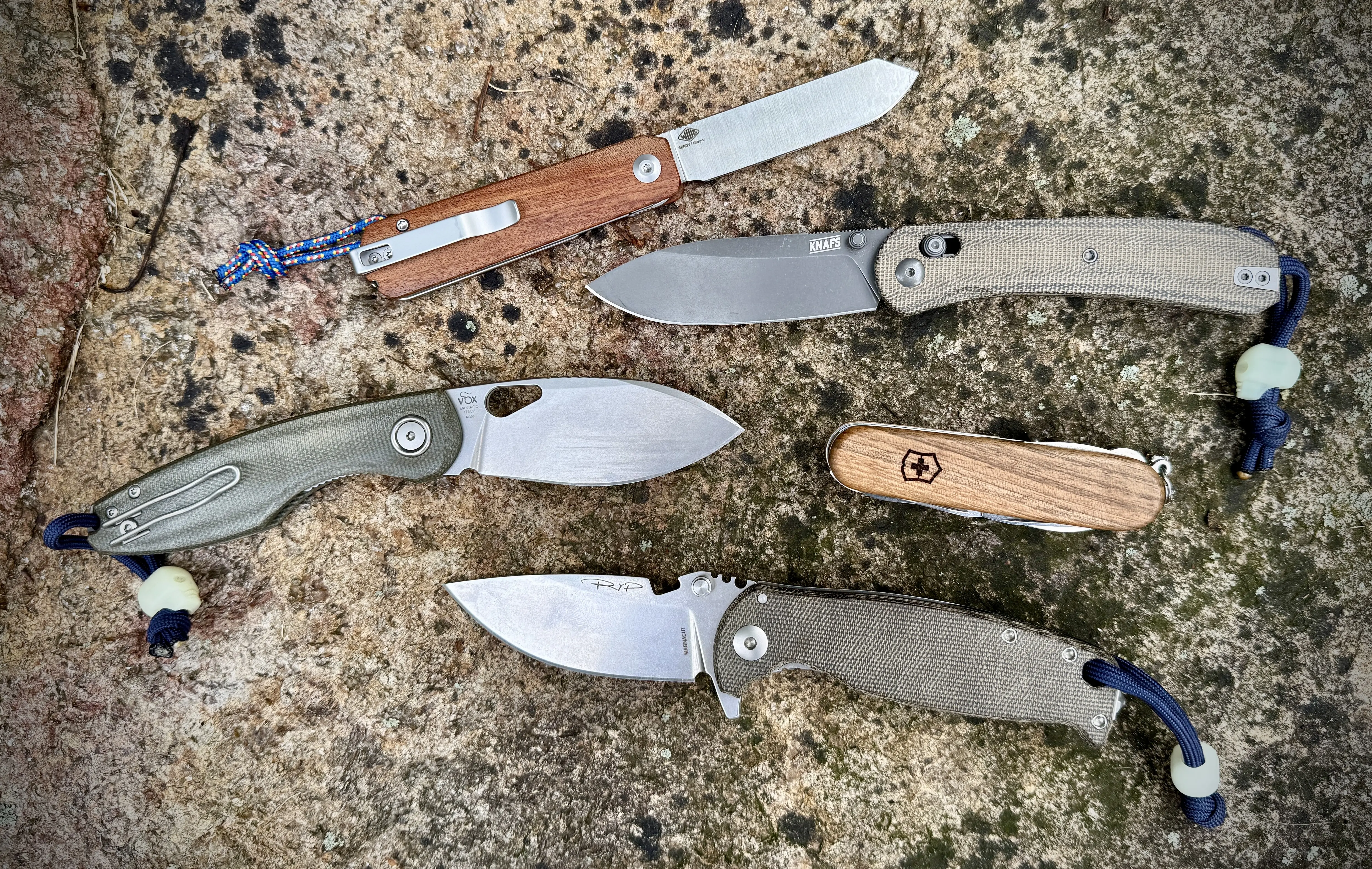
How We Tested the Best Pocket Knives
Out of all of the things we test around GearJunkie, pocket knives seem to get easier and easier every year — because everyone wants one. Suffice it to say, the knives we’ve recommended on this list weren’t just tested at a desk or in some random workshop in the Midwest, they were used, abused, loved, and carried for extended periods.
For this update, we enlisted our resident knife tester, Nick LeFort to take the reins to determine what knives out there were worthy of this list. He spent the fall and winter testing out a variety of knives in his day-to-day life, out on adventures, and in all conditions. LeFort believes that the best way to see what a knife can do is to rely on it in real life. He’s not wrong.
So, What Did They Do?
Where you can find YouTube and the internet peppered with people cutting rope and cardboard in their garage, you’re more apt to find Nick out in the woods, down by a river, or wherever his day takes them. Heck, you may see him wandering around Whole Foods with one of these knives (in their pocket, of course). To him, testing isn’t a 9-to-5 job; these knives are part of his life.
Having a keen sense of how a particular knife steel performs, or how a certain handle material’s grip could be impacted by inclement weather, as well as a vast knowledge of what’s going on in the market, he was able to act and react accordingly. On these few aspects as well as many others. The end result is the purest form of product testing: in the moment.
The bottom line is that our approach to testing is to make sure a product and its parts perform as expected. With marketing being what it is, with the intent to sell one particular knife above all of the others, it’s easy to buy into the hype. In this case, we look at that hype and see if it’s all just talk or the real deal.
Buyer’s Guide: How to Choose a Pocket Knife
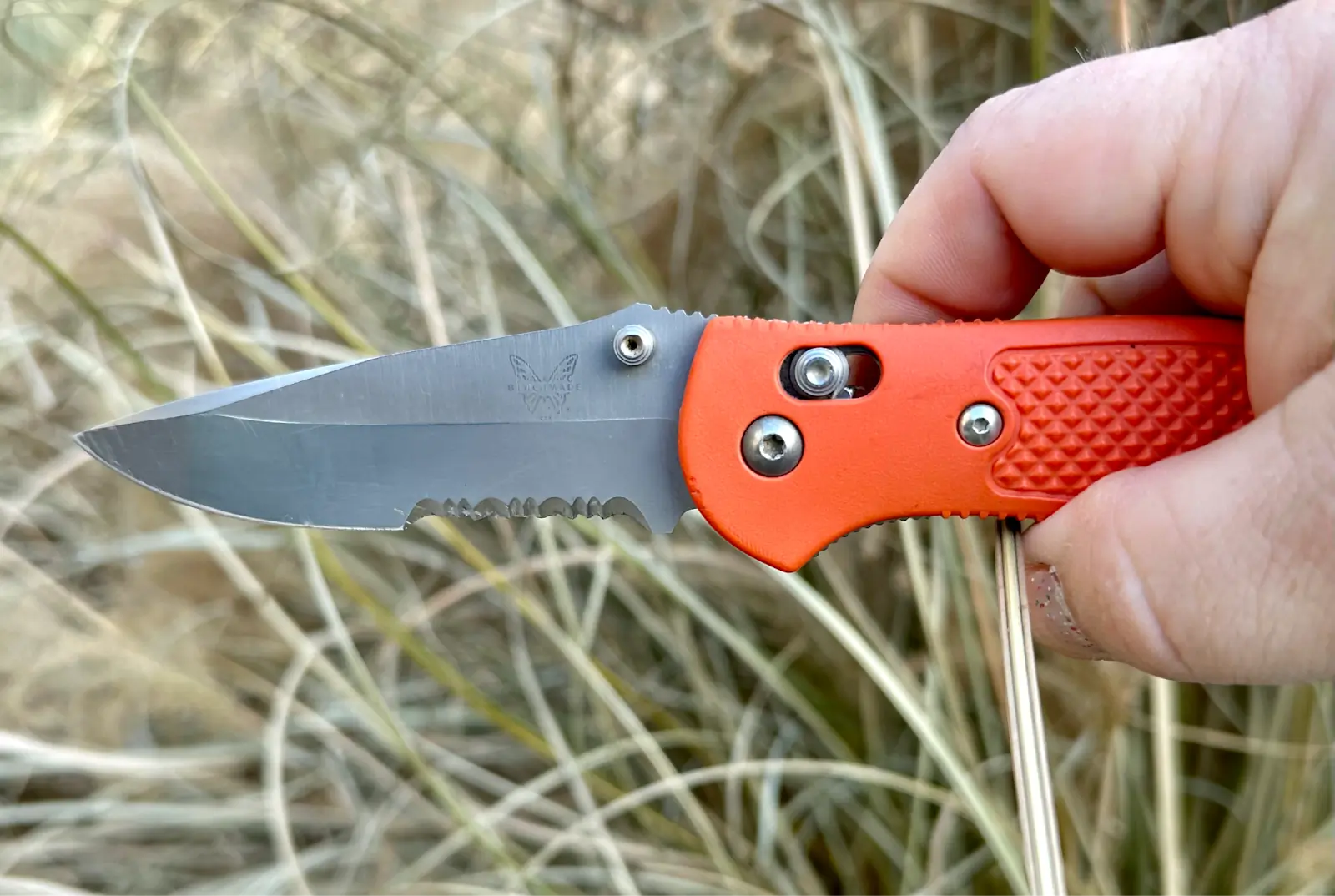



Knife Steel
The amount of knife blade steel and handle materials out there is pretty impressive. But, where the handle materials seem to have stabilized, there’s new steel coming out every year. As you can see from the above selection of eight knives, there are seven different knife steels. Our recommendation is to consider each steel on a case-by-case basis. But they should still meet or exceed the following requirements:
Corrosion Resistance
The last thing you want is your knife turning orange on you out in the field. Especially if you’re planning on using it to prepare food. All of the steel mentioned in this guide either has exceptional corrosion resistance or has been coated to eliminate the occurrence of rust.
Abrasion Resistance
Some people consider this property to be more form than function. But in all reality, if your blade can easily get scraped up that can lead to chipping, which then could lead to blade failure.
Edge Retention/Ease of Resharpening
No matter what knife you carry, the worst knife you could carry is a dull one. That being said, you want to look for knife steels that either excel in edge retention or can be easily resharpened.
You can learn more about specific knife steels here.
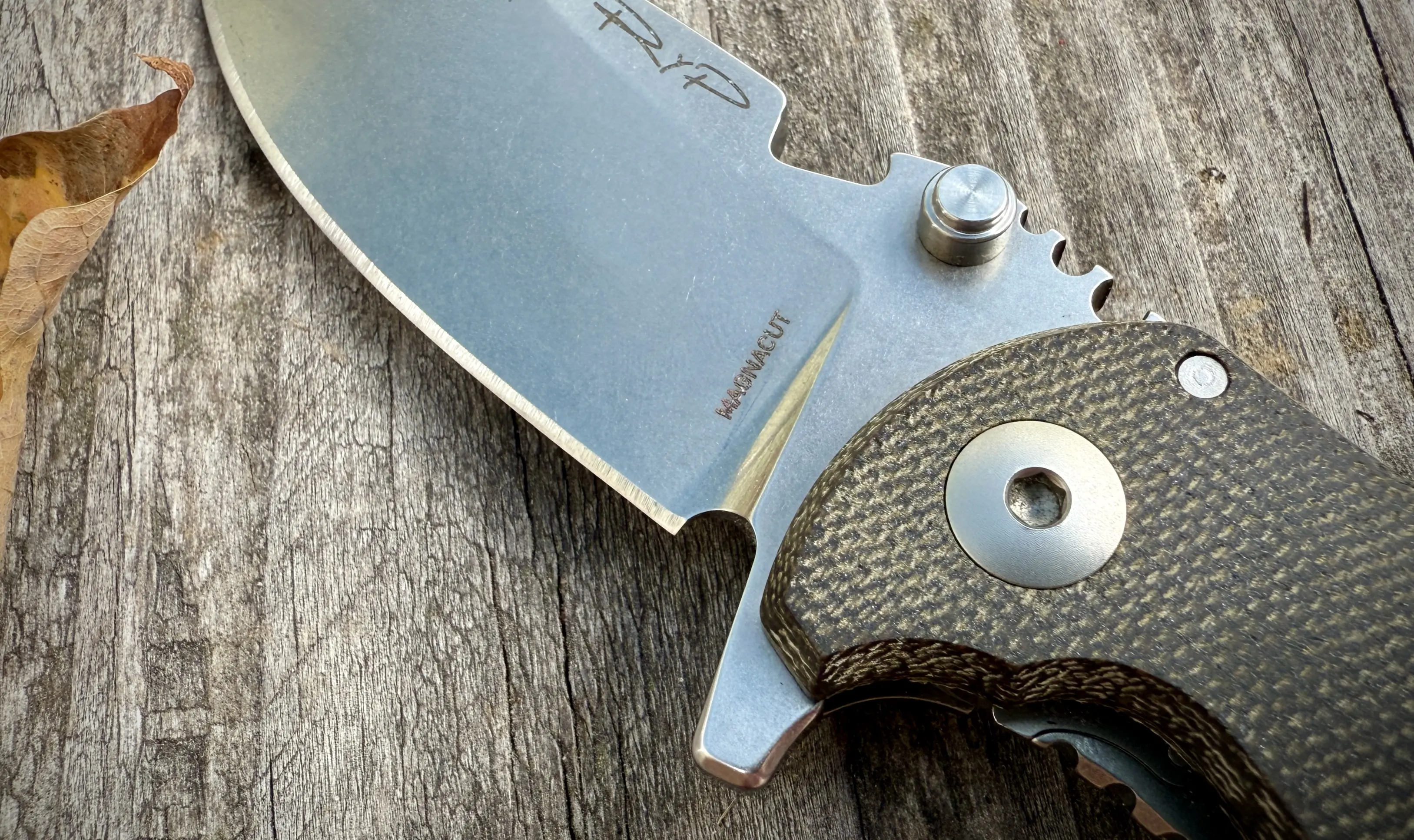



Handle Material
When it comes down to handle material it’s all about grip. Ergonomics play a part in this as well, as you could have great handle material in a weird shape that will cause fatigue. In the end, you won’t want to use the knife and you’ll have wasted your money. These are some of the more preferred materials on the market today:
G10 & Micarta
G10 and Micarta are both extremely strong materials. Both excel in grip whether your hands are wet or dry, which is why those two materials are so popular with EDC, Survival, Tactical, and Bushcraft-style knives.
Nylon & Plastic
Nylon and plastic also make for great handle materials because they’re durable and lightweight. They’re also generally textured. It’s this texturing and styling that increases the grip on a knife with these materials.
Note: Nylon and plastic handle scales carry a litany of names. Some of the more popular names are: FRN/Zytel (Fiber Reinforced Nylon), GRN (Glass Reinforced Nylon), GFN (Glass Filled Nylon), and Grivory (Injection Molded).
Carbon Fiber
A lot of folks think carbon fiber is just pretty to look at, but in all reality, this woven material is lightweight and strong. Depending on its composition, it could be the perfect balance between strength, weight, and durability. You can bet your bippy you’ll pay more for a knife with carbon fiber, but it’s worth it.
Aluminum & Titanium
Both aluminum and titanium are incredibly strong and lightweight materials, making them great for knife handle scales. But where aluminum has become relegated to budget knives, titanium is usually saved for premium and ultra-premium knives. The only drawback to both of these materials is that they can be slippery when wet.
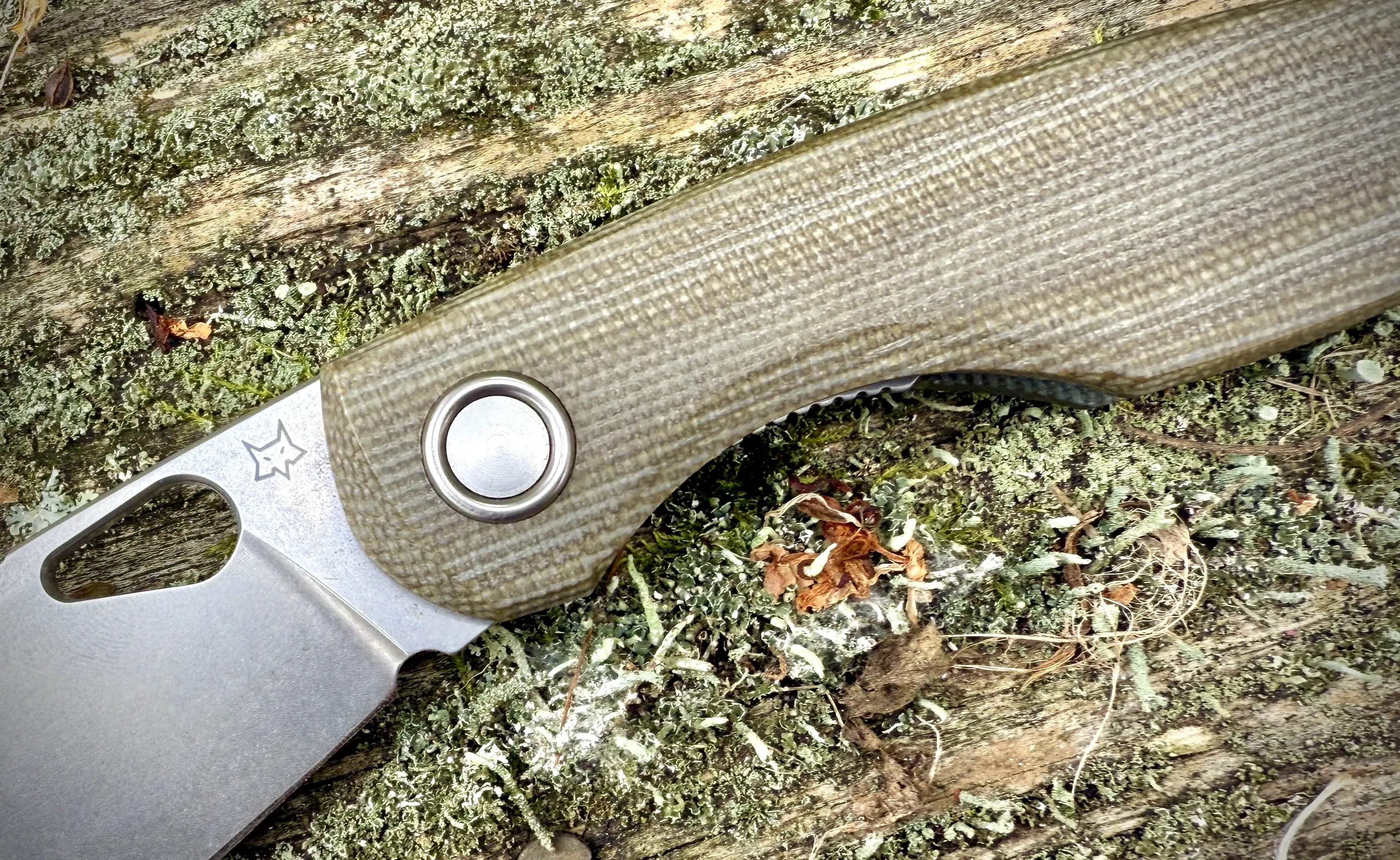



Ease of Use
Ease of use is a big deal when considering what knife is right for you. It can come in many forms from ergonomics, to lock design, to the hardware used to keep the knife together and in good functioning order. All in all, the last thing you want to do is struggle with or be uncomfortable using your knife.
Accessibility
Aside from how a knife functions, your ability to access it plays a role in its reliability. After all, if you can’t reach it when you need it, then why carry it at all? The right knife for you will be easy to carry in your pocket or on your belt.
Ergonomics
A good knife will feel right in your hand. From the shape of the handle scales to the overall thickness, and even texturing, ergonomics can be the difference between you being confident with your knife or leaving it in your drawer at home. When you consider a knife, put it in your hand and give it a good squeeze. Then, push down hard on a hard surface. If everything feels right, that’s your next knife.
Lock Mechanism
Without fail, you will find yourself in a position where you need to rely on the lock on your knife more than you expected.
Some of the more common lock types are liner/frame locks that use a bar that indexes into the back of the blade. There are also button-style locks that use a steel barrel to keep the blade engaged. However, the most popular lock type is the crossbar lock which also uses a steel bar to hold the knife in place.
In my time and experience, I have never seen a crossbar-style lock mechanism fail without some outside force, creating a major disruption in how the knife functions. Like a truck running it over.
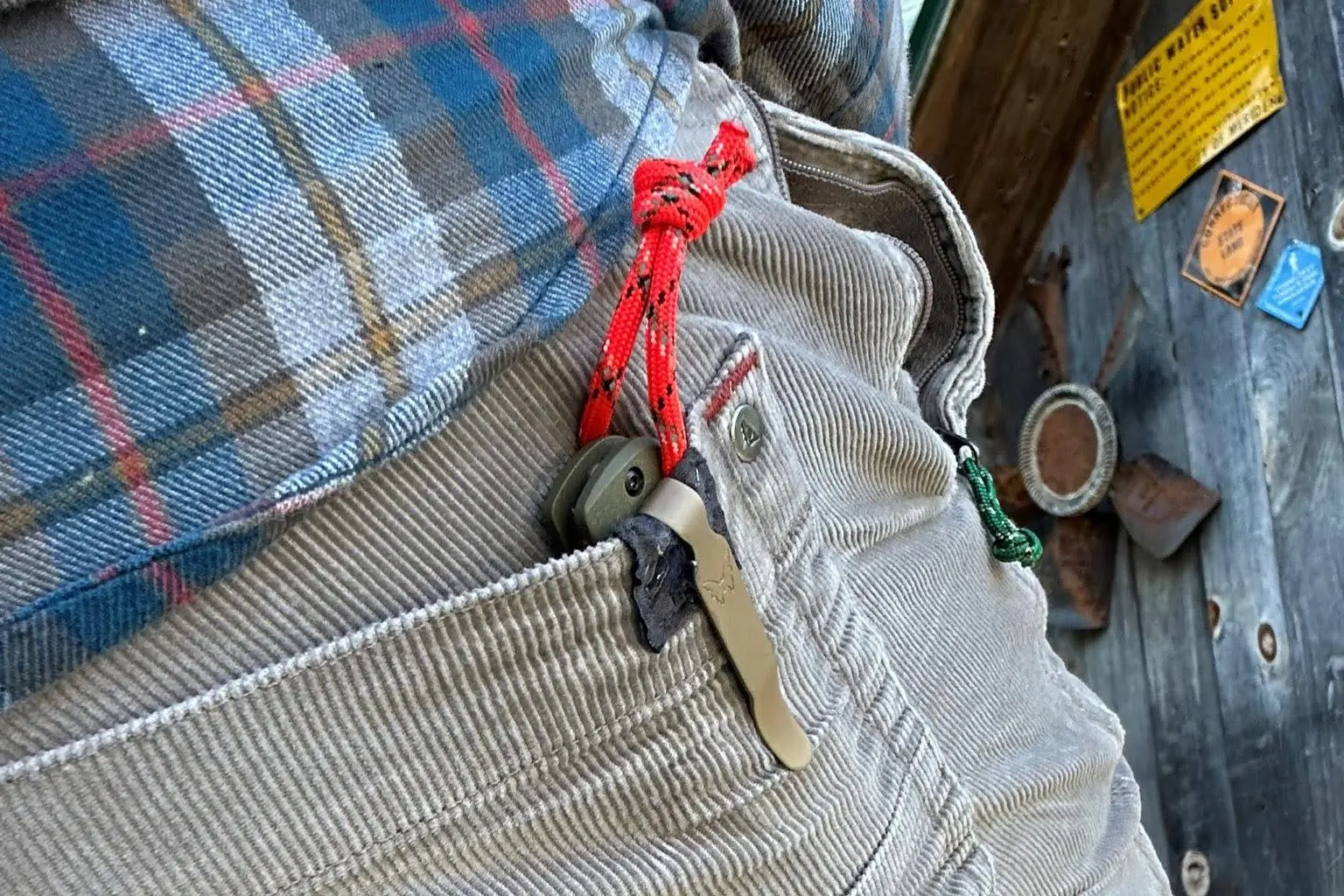



Pocket Clip
The right pocket clip will keep your knife in place in your pocket and will be easy to insert and remove. Generally, pocket clips are steel or titanium, designed to retain their shape, and be around half the length of the knife when they are closed.
However, there are wire pocket clips that can deform over time. There are also shorter pocket clips that, depending on the size of the knife, can cause it to float around in your pocket, or even come out of your pocket.
I would pick a wire pocket clip over a shorter clip any day.
Ball Bearings
Ten years ago, you needed to pay $300 to get a knife with ball bearings in it, but now you can find them for under $100.
Ball bearings assist in the opening and closing of a knife. In fact, there are some knives out there that are so fluid in operation, due to ball bearings, that they’re just as fast, if not faster than an automatic knife. They’re also legal in more places than an auto.
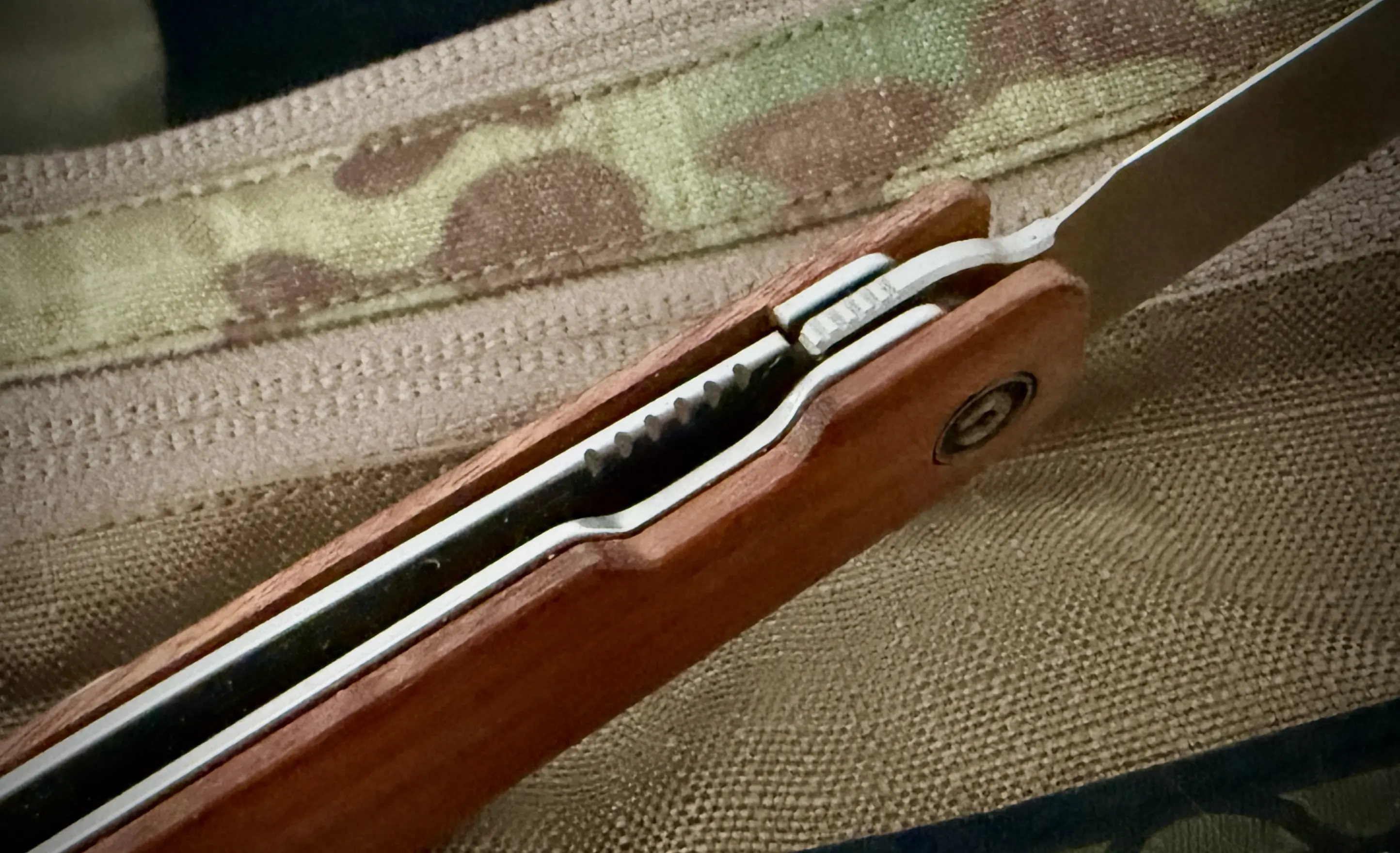



Price & Value
Knife pricing isn’t as cut and dry as I think most of us would like it to be. Yes, just like with any other consumer good, factors like materials, design, and function all play into the final price of a knife. However, as we’ve recently seen with a reliable and desirable $10 knife from Walmart, there are a lot of things going on behind the scenes that determine what we pay at the store for a knife.
How much material a knife manufacturer buys has a major impact on the price you pay for a knife. Material prices, in general, will fluctuate based on how much of each item a brand purchases overall. We’ve most recently seen this with MagnaCut, which became a popular steel seemingly overnight. As more brands adopted it in their knives, the overall price of the steel itself went down.
Another major factor is the country of origin. Within the last decade, the quality of knives made by overseas brands like WE Knife, CIVIVI, and most recently, OKNIFE has improved beyond anything we could have imagined. However, the brand’s prices are still comparatively lower than similar knives made in North America.
This brings up the brand name factor. Knives from brands like Benchmade generally retail for more than similar knives from other brands. It’s not outside the realm of reason that you’re paying into the brand as much as you are the product. In the case of Benchmade, you’re also buying free sharpening for life as well as a pretty significant lifetime warranty.
With that said, we’re going to break knives down into the following three categories based on pricing in general. But, to be fair, in the production knife world, there are no clear and defining lines between Budget knives, Mid-tier knives, or Premium knives. The following is a generalization of what you can expect from each category.
Budget
You can expect to pay less than $100 for budget knives, which usually have more affordable materials. Does this make the knife any less useful? No. A budget knife should do everything you would expect it to. However, it may require more maintenance to keep it up and running.
Knives like the CRKT CEO Microflipper ($60) and CIVIVI Yonder ($67) that use Sandvik 12C27 and Nitro-V are considered budget knives. Although both steels are stainless and will, therefore, stand up against moisture and stave off rust and corrosion, both steels require more sharpening to maintain their reliable edge.
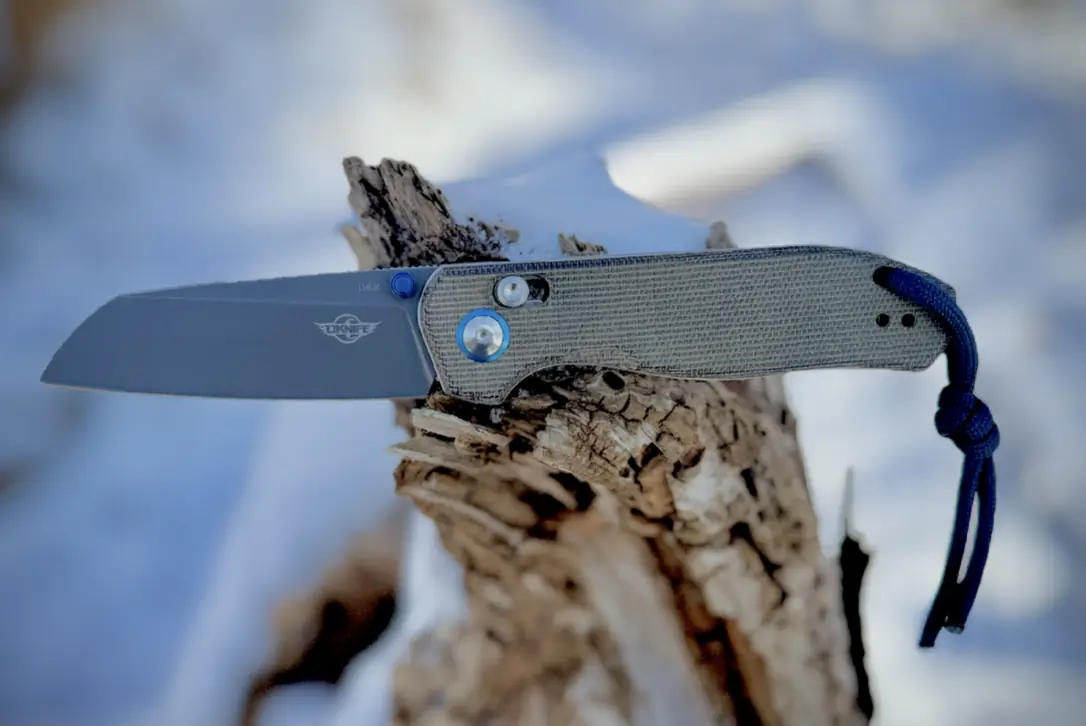



Another great budget example is the OKNIFE Rubato 2 ($85). It has premium 154CM, Micarta handle scales, a stainless steel liner, and a crossbar lock. Ten years ago, this knife would have cost $150-175, but as other steels have taken precedence over 154CM, the price of that steel has plummeted. This is a major bonus for anyone looking for a heck of a knife on a budget.
Mid-Tier
A majority of people carry mid-tier knives around. Ranging from $100 to $200, they may feature a range of steels like 154CM, M390, S35VN or even MagnaCut. All four of those steels can also be found on premium knives, due to their corrosion and abrasion-resistant properties, toughness, and edge retention. Mid-tier knives tend to have a more robust build than Budget knives.
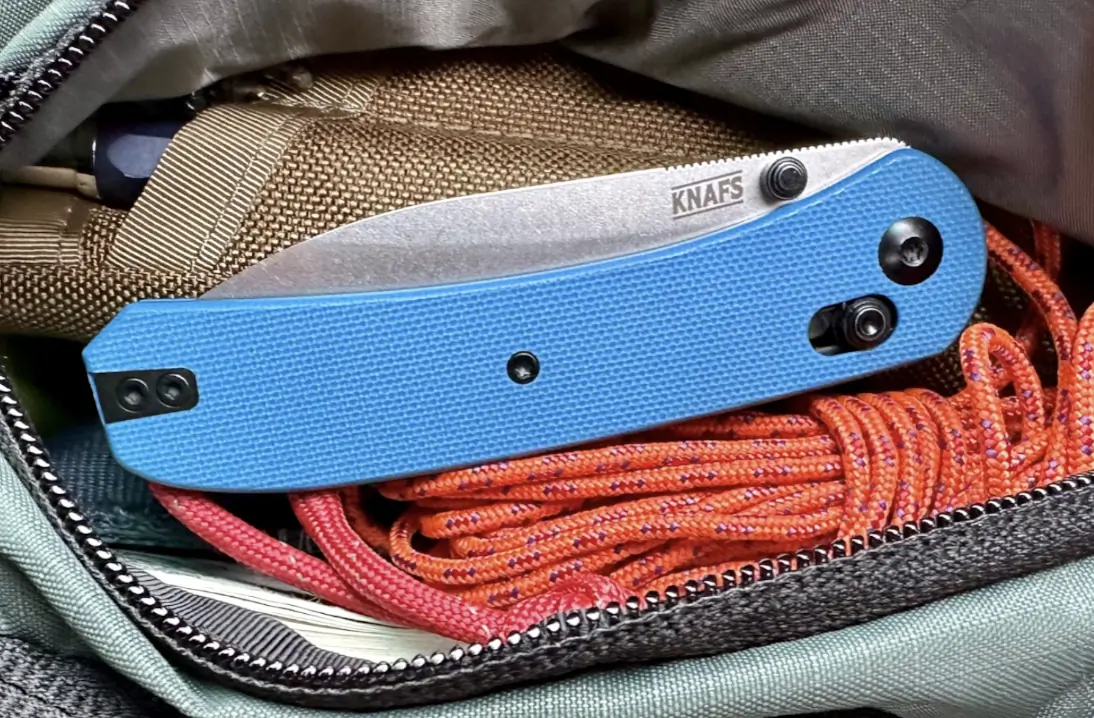



There also may be a heavier focus on ergonomics and knife weight. The Knafs Lander 2 ($129) is a great example of a mid-tier knife. It has S35VN steel, Micarta, G10, or carbon fiber handle scales, and a crossbar lock. These are all desirable materials and features at an easy-to-digest price
Premium
Premium knives are the cream of the crop and make up a small segment of the market. They may be priced higher due to the manufacturer or where the knife is made. They could also use new and innovative materials, or a combination of all three of these reasons.
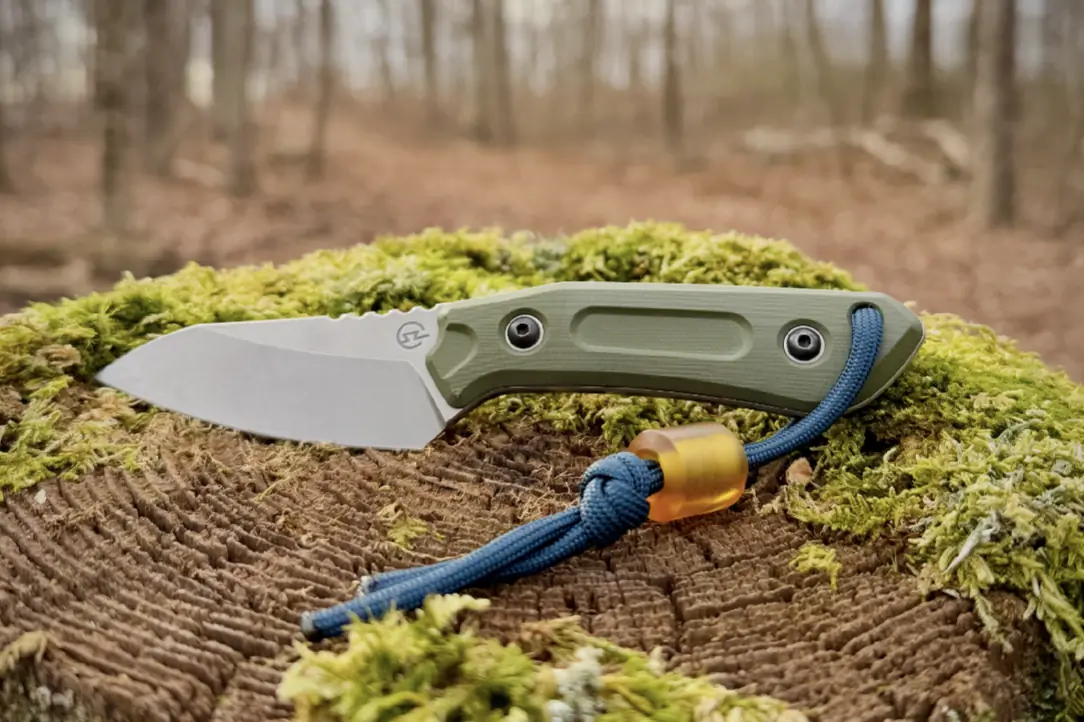



Another variable is availability. Some manufacturers make knives in smaller batches. Other knives are custom. In these instances, you can expect to pay more as well. The Schwarz Knives Overland Sport ($265) from Schwarz Knives is a small-batch, customizable, made-to-order knife. Due to its exclusivity, its price is reasonably high.
Where a lot of people instantly think of Benchmade as their prime example of premium, there’s also DPx Gear, which is a smaller, boutique-style brand. They offer production knives like the HEST/F 4.0 ($275), which is hand-made from premium materials. So, again, like Schwarz Knives, there’s a hint of exclusivity here, although in the case of DPx, it’s on a larger scale.
Frequently Asked Questions
From opening packages to slicing up food, pocket knives offer a wealth of utility. Rather than using your fingernails, a car key, or half of a pair of scissors, pocket knives are a natural piece for people with a lot of tasks on their hands. This is especially true for outdoor enthusiasts, who deal with materials like rope, wood, and canvas all the time.
One reason you won’t see on this list is self-defense. Despite what some industry marketing material would lead you to believe, carrying a pocket knife doesn’t turn you into a commando or modern-day gladiator.
Unless you’re a trained weapons expert, you’re just as likely to injure yourself as any would-be attacker. If you feel the need to carry something for protection, you’re far better off with a can of pepper spray. Pocket knives are best treated as tools — not weapons.
Although there’s no right answer that fits everyone and their needs, a folding knife with an overall length of 8-8.5” with a blade length of 3-3.5” is ideal. At these lengths, you can expect the knife to be balanced, able to complete most daily tasks and be carried comfortably.
That said, we always recommend you test fit the knife to make sure it fits your hand and you feel safe and confident using it. Beyond that, keep in mind that each state, and even cities, have specific laws and regulations regarding knives. Make sure to read up on your local laws before making a purchase.
Plain edge blades are generally one continuous edge and they can be great for cutting, chopping, shaving, and slicing.
Generally, a serrated blade is a combination of a plain edge and serrations, usually towards the back of the blade near the pivot. The benefit of serrations on a blade is that it can be used for sawing through limbs and rope.
Overall, when choosing between a blade with a plain edge and one with serrations you need to take into consideration if you really need it. Serrations take up space on a blade edge and are more complicated to sharpen.
Your knife is only going to benefit you if it’s in good working order. With a fixed-blade knife, maintenance is generally focused on keeping the blade edge sharp and free of knicks or chips as this can lead to failure. With a folding knife, it can get a little more complicated as there are moving parts that need to be maintained to make sure the knife is safe to use for years to come.
Here are some basic tips that you should get into a routine of doing to make sure your knife is reliable and ready for your next adventure.
Make sure it’s sharp!
A dull knife isn’t any good to you. In fact, a dull knife can be dangerous. Thankfully, most knives on the market have steels that you can easily sharpen with the right sharpener and a little practice. That said, if you ever have any questions about the blade steel on your knife and how to sharpen it, we recommend contacting the manufacturer.
Pro Tip: Some knife manufacturers, like Benchmade, offer free knife sharpening for life.
Keep it clean and lubricated!
Water, dirt, and debris can all lead to your knife failing on you. Make sure to wipe your blade down and that the handle cavity is dry and free of debris.
It’s perfectly fine to wash down your blade with dish soap and water, making sure to wipe it down and let it air dry. We also recommend coating your blade with any type of food-grade lubricant.
Additionally, you want to make sure that the lock mechanism and pivot are free of debris and in working order as well. These can be cleaned with a Q-tip soaked in rubbing alcohol, or canned air. You should always re-lubricate these areas after cleaning your knife.
If the knife manufacturer recommends a specific lubricant, it’s always best to use that.
There was a time when we would have told you no, but as more and more automatic knives arrive in the market, they can be.
Though they tend to be more expensive and can be a hassle to maintain, the stigma surrounding automatic knives is legality. Generally speaking, automatic knives are relegated to military and law enforcement personnel. Depending on where you live and where you plan on carrying an automatic knife, as a civilian you could be breaking the law.
That said, we recommend you check your local laws and regulations before carrying an automatic knife.
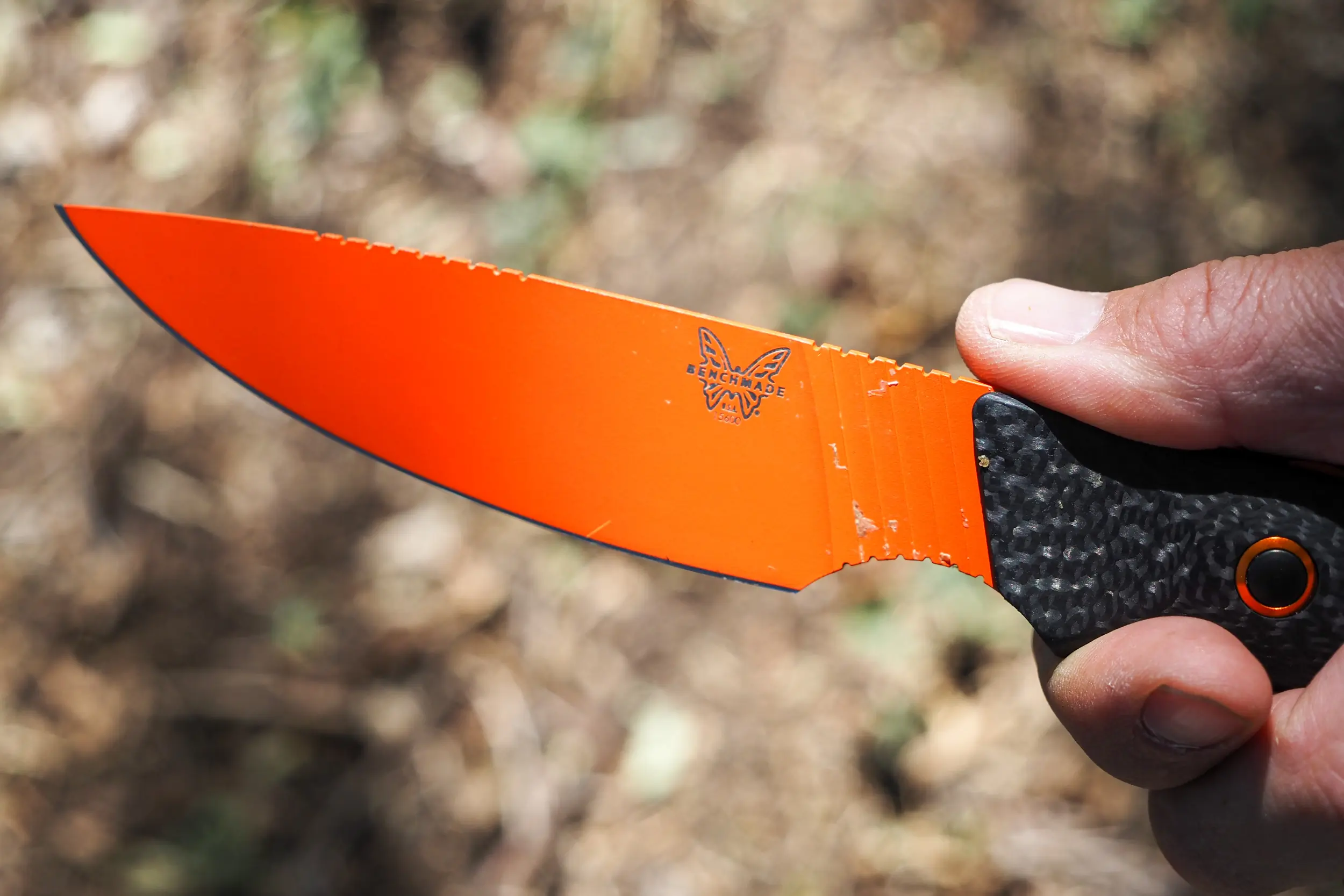

The Best Hunting Knives of 2025
A hunting knife has a single purpose: processing meat after a kill. We did the research to help you find the best hunting knife for your needs and budget.
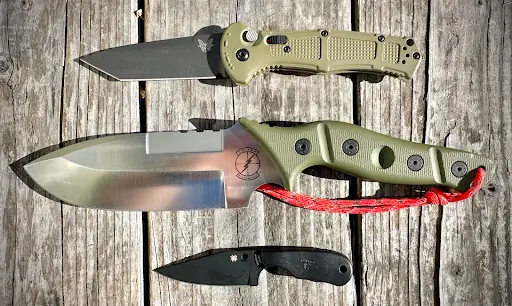

The Best Tactical Knives of 2025
Known by many names, a tactical knife generally refers to a hardworking, do-all blade. Here, we review the best folding and fixed-blade knives for every budget and use.
